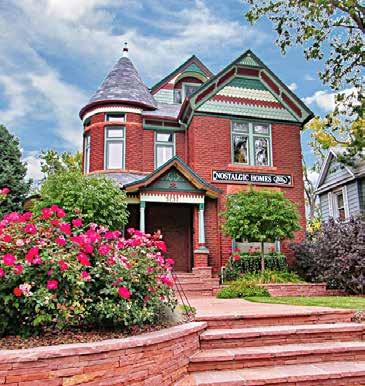Turmoil in Restaurant Industry Leads to Protest, Controversial New Bill
By Miranda Ericksen
ARTS AND CULTURE
Bringing ‘Magik’ to Sloan’s Lake Neighborhood
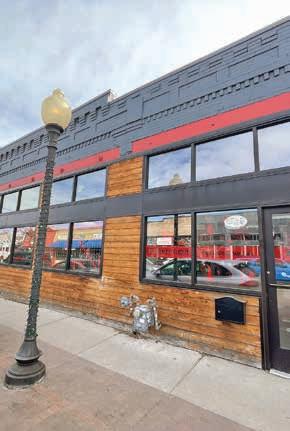
PAGE 4
Affect Your Community
PAGES 8-16
By Eric HeinzLake Middle School students are getting a lesson in participatory democracy and the power of protest, as Denver Public Schools (DPS) recently announced it would not consolidate with another school with the campus.
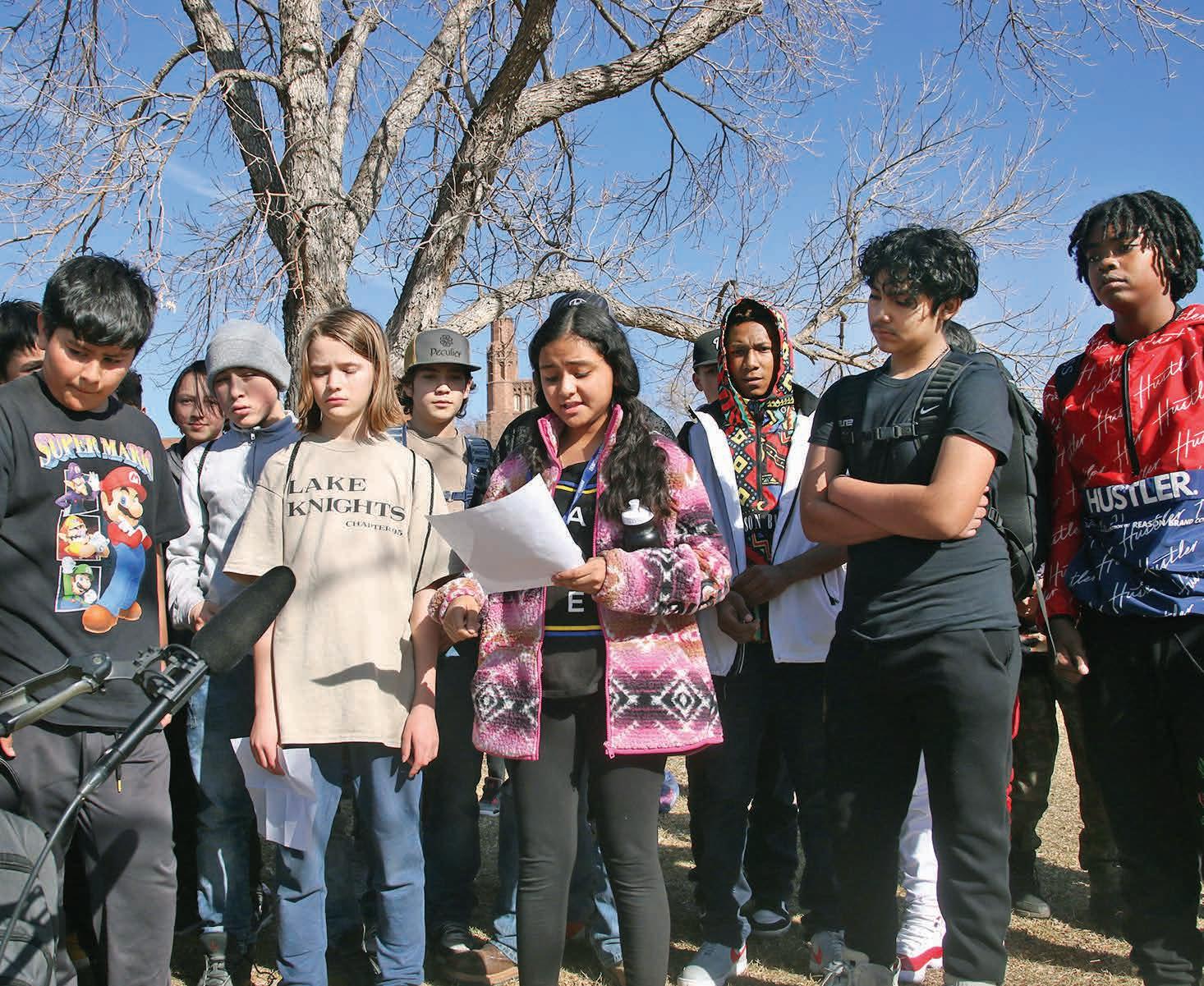
Lake students, faculty, and parents organized to argue against moving Next Steps school onto the campus, saying the school was already cramped and that the facility could not adequately meet the needs of the specialized services Next Steps would require.
Students held a "mock walkout" and spoke at the school board meeting that more protests were to come if the board didn't heed the will of the school community.
It appears to have worked.
Since the arrival of STRIVE Prep at the Lake campus, students said they’ve had to create makeshift classrooms in the library and other unconventional spaces, as the student population was around 600.
Although DPS documents show the school might have a capacity of up to 1,000, students say it was difficult to manage with the enrollment they had.
Although STRIVE is expected to leave the Lake campus next school year, DPS was going to move a program known as Next Steps in its place. Next Steps is currently at the former Barrett Elementary School.
Steve Smith, a teacher at Lake Middle, told The Denver North Star there is a possibility Next Steps will move to Fairview Elementary next year, which is slated to close due to declining enrollment.
DPS administration told The Denver North Star prior to publication that the district had not made a decision, but one would be forthcoming.
"I don't understand why DPS staff were ever considering Lake as a possible placement for next steps, but I do give Dr. Marrero credit for taking leadership,” Smith said. “While the closing of Fairview will certainly dis-
appoint many, if the significant renovations that are needed at Fairview can be done while the new housing units are built, I think there is a decent chance that Fairview may reopen once the new buildings are filled."
Next Steps is part of a network of different schools separate from traditional instruction and that are intended to address students’ learning difficulties or behavioral issues.
But Next Steps is dedicated to addressing some of the most severe behavioral cases and could include highschool-age students. Although there’s been trepidation from Lake Middle students and parents, DPS stated the current enrollment for Next Steps is 15 students and that number could decrease as some of them graduate.
As DPS continues to wrestle with its declining enrollment numbers, Smith said it would have been difficult to balance bringing in a new school when something like Next Steps could cause parents to pull their kids from Lake, making its enrollment decline as well.
Speaking with some of the current students at the school, they had a collective fear that another program from Denver Public Schools next year would continue to make learning difficult.
Students gathered recently across the street from campus to hold a mock walk-out to demonstrate what they’re willing to do if Next Steps is moved to Lake.
Jaci Tylicki, a parent and president of the Lake Middle Parent Teacher Organization, said her child is planning to attend Lake Middle next year as a sixth-grader, and she had concerns about Next Steps moving to the school.
“It’s really sad. It’s the kids who, unfortunately, have the most issues, and I’m really concerned about the safety of my kids,” Tylicki said.
Tylicki said the only feasible spot for Next Steps would have been in the basement of Lake Middle, which she doesn’t see as a constructive environment for students with severe
Not only has the restaurant industry weathered changes due to staffing shortages, supply chain challenges and evolving regulations during COVID, it is now faced with additional issues around workers’ wages, and saw a controversial bill recently fail in the Colorado Legislature.
One Fair Wage, a national organization seeking to end all subminimum wages in the United States, organized a protest outside the Colorado Restaurant Association’s (CRA) headquarters on Valentine’s Day.
According to the One Fair Wage website, “One Fair Wage works to advance policy, drive industry change, and shift the narrative in order to ensure that all workers in America are paid at least the full minimum wage from their employers.”
The protest was conducted nationally at various National Restaurant Association headquarters, an organization with which the CRA is not affiliated.

As of Jan. 1, Denver increased the minimum wage to $17.29 per hour, or $14.27 plus an option for a $3.02 tip for food and beverage industry. In contrast, the Colorado tipped minimum wage is $10.63 per hour.
The small group of protesters was present recently at CRA, expressing opposition to appropriation of revenue from CRA’s required ServSafe safety training courses, saying that the association used the revenue from the training courses toward lobbying efforts to suppress workers’ wage rights.
ServSafe safety training courses cover basic food safety concepts and prevention of food-borne illness. They are a legal requirement for managers of restaurants in Colorado, but not for all food handlers.
The courses range from $140 for CRA members to $180 for non-member establishments. Since the change in minimum wage for Denver began, the CRA turned its attention toward advocacy against HB23-1118 Fair Workweek Employment Standards, which failed to get out of committee recently.
“I’m disappointed that the Fair Workweek Act fell short this year, even though sponsors and the coalition tried to find compromises with the opposition,” Rep. Emily Sirota, a bill sponsor, said in a press release. “It looks like well-heeled, industry lobbyists won this year, leaving low-wage workers at the mercy of unpredictable schedules that put their health at risk, interfere with their family responsibilities and jeopardize their economic stability.”
HB23-1118 would have required employees to submit schedule-change requests 14 days in advance and impose financial penalties on employers for any schedule changes once posted.
According to the Colorado Secretary of State website, CRA has paid $14,000 since See RESTAURANT, Page 4

CUSTOM REMODELS &
J.M.
Call or text (303) 910-9909
jmernsthomeservices@gmail.com

The dental clinic where everybody is welcome.
‘Tough Decision’: DPS Re-examines Declining Enrollment, Will Close Three Schools
By Eric HeinzAlthough just a few months ago the Denver Public Schools Board of Education decided not to move forward with any potential school closures, the enrollment numbers at struggling schools have become an issue it cannot avoid.
During a recent board meeting, Superintendent Alex Marrero presented a list of 15 schools with enrollment trends considered “concerning,” and three others were deemed “critically low.” Those latter three will close at the end of this school year.
Those schools, which have fewer than 150 students, are Fairview Elementary, the Mathematics and Science Leadership Academy (MSLA) and Denver Discovery.
Denver Discovery, for example, has an expected 2023-2024 enrollment of 63 students, with 15 incoming kindergarten through sixth-graders and only a few of them were planning to attend based on school of choice procedures.
“The most important Shared Core Value of Denver Public Schools is to always put Students First,” Marrero said in a recent prepared statement. “Some may think it is unreasonable to claim we are putting students first while closing their school. I assure you that is not the case. All of our scholars deserve equitable access to a high-quality education.”
Marrero said he would provide options to the board in the coming months about how to address the remaining schools with concerning enrollment for the 2024-2025 school year.
Dr. Janda and Dr. Garrison 4433 W. 29th Ave., Suite 206 cityrootsdental.com 720-428-8916
720-248-7327
P.O. Box 11584, Denver CO 80211 DenverNorthStar.com
PUBLISHER: David Sabados
EDITOR: Eric Heinz

ART DIRECTOR/
GRAPHIC DESIGNER: Melissa Levad-Feeney
ADVERTISING SALES: David Walsh
BUSINESS MANAGER: Emma Donahue
NEWS INQUIRIES:
For news inquiries, email News@DenverNorthStar.com
ADVERTISING INQUIRIES:
For advertising inquiries, email Ads@DenverNorthStar.com.
GET INVOLVED!
You can make a contribution, sign up to receive email updates and submit events for our community calendar at DenverNorthStar.com.


DISTRIBUTION:
The Denver North Star prints over 34,000 copies each edition and is mailed free of charge to homes and businesses in North Denver. Additional copies can be found at local businesses in the community. New editions are published on the 15th of each month.
LET’S BE SOCIAL @DenverNorthStar
“I understand there’s been some mixed messages in the way that folks have interpreted the presentation (on past recommendations for school closures or consolidations), and I feel terrible about that and I apologize to the school communities,” the superintendent said during a recent board meeting.
The schools with concerning levels of enrollment, those with 250 or fewer students, are Cole Arts & Sciences Academy, International Academy of Denver at Harrington, Palmer Elementary, Colfax Elementary, Beach Court Elementary, Columbian Elementary, Schmitt Elementary, Hallett Academy, Eagleton Elementary, Kaiser Elementary, Whittier K-8 and Ashley Elementary.
Elementary enrollment has declined by 6,485 students since the peak in 2014. Middle school enrollment declined by 1,612 students since the peak in 2019, according to the data Marrero provided. That has translated into millions of dollars in supplemental funding for the schools with declining enrollment.
The students and faculty at the three critical schools set to close will get the first round of school of choice.
Parents and guardians affected by the closures can call the DPS Choice and Enrollment Services hotline at 720-423-3493 to apply for
their preferred schools by 4 p.m. on March 22.
DPS stated the Choice and Enrollment Services will phone affected families individually. Families must speak to a member of the Choice and Enrollment Services team to submit their application.
If no action is taken, Fairview students will be automatically enrolled at Cheltenham Elementary, and MSLA students will be automatically enrolled at Valverde, DPS stated.
The families at Denver Discovery told the district they did not want to be paired with a specific school, DPS stated.
Enrollment guides are available in the school front office and online. School information is also available on the School Finder webpage.
“We are at a crossroads with these three schools, and I think I'm in a much different position than I was a few months ago with these three,” Board Vice President Auon’tai M. Anderson said during the meeting. “I would love to have longer conversations than the others, but I don’t see where we can turn around. I think that there’s a tough decision we have to make, and I think that we need to make it sooner instead of dragging on uncertainty for this for these three communities.”
Board member Scott Esserman said during a recent board meeting it is vital that DPS communicate with all the schools listed, as the last time the district sent out a list of possible closures and consolidations in late 2022, it created heated backlash.
“What was put out was a snapshot and a presentation that was interpreted by communities still recoiling from the last action, which further undermined what trust existed,” Esserman said. “We continue and we will always have opportunities to build trust, and I believe this is one of those.”
Parady, O’Brien, and a Better Way
The following opinion of The Denver North Star’s publisher David Sabados was intentionally not shared with the writer of the election stories prior to publication to avoid any potential bias. For more information on the city elections, see our special section starting on page 8.
PARADY PAIRS WELL AT-LARGE
I hadn’t planned on making a public endorsement in the city council at-large race, but then I talked with Sarah Parady. I’ve noticed a lot of people have one favorite for council atlarge and it’s no surprise - there are a number of fantastic candidates. As a reminder, you get two votes, and if you have one candidate you are passionate about but undecided on your second, please consider Parady.
A pragmatic, social justice minded attorney, she won one of Colorado’s largest disability discrimination cases and fought to return nearly $1million in stolen wages to blue collar workers. If you ask her about issues ranging from homelessness to housing to crime, you don’t get platitudes. You get thoughtful proposals of how to create housing while protecting character. Plans to create gentle density that supports instead of displaces working families. Ideas on how to help small businesses, many of which are still struggling to come back from the pandemic, access city resources and cut through red tape.
She’s also collaborative, which is a vital skill for this new council. I heard her explain one idea, pause, and tell the crowd that it was an idea she heard from one of the mayoral candidates, cited by name, and that she didn’t want to take credit for others’ work. If only every politician had the same ethics.
Parady has the endorsement of labor
unions, COLOR Action Fund that serves our Latinx community, and community members across the city. Denver is losing two experienced at-large councilwomen. She would be an outstanding replacement and Parady pairs well with whoever else you are passionate about for council at-large.
O’BRIEN AUDITS IMPORTANT FOR CITY
The City Auditor is possibly the most important position few people pay much attention to. Tasked with review of city projects and spending, it’s a role that requires dispassionate, meticulous analysis and an iron spine.

For the past eight years, Tim O’brien has served that role well as Denver’s elected auditor and our city would be well served sending him back for a third and final term. In the past eight years, O’Brien has done professional reviews of everything from Denver International Airport, to short term rentals, to the city’s new trash system, and everything in between. Without bias or malice, those audits have at times shown where the city has succeeded, and other instances where it must do better.
O’Brien’s work has earned him the respect of national colleagues, including winning Knighton Awards for performance audits, which are bestowed by the Association of Local Government Auditors. His work has also at times drawn him the ire of city officials who don’t always appreciate that his job, quite literally, is to make them open their books and to give professional feedback on government effectiveness, which at times includes critique. O’Brien has twice run one of the least flashy campaigns possible and won, which should only underline his dedication to the job instead of playing politics with a crucial government role.
Denver will have a new mayor and at least
five new council members. Send O’Brien back for one last term to be the stable oversight in city city government we need.
IT DIDN’T HAVE TO BE THIS WAY
If you’re like me and (according to polls) about 60% of Denverites, you may still be scratching your head about the Mayor’s race. With 17 candidates on ballot, it’s likely two candidates earning only 10% or so of the vote will advance to a runoff, forcing voters to try to decide between their hearts, who they guess might be viable, and at times minute differences between several similar policy stances.
It didn’t have to be this way. Back in 2021, the city clerk and recorder told city council changes were needed to bring Denver’s election laws into compliance with federal laws. He presented two options: extend the runoff period an extra month or implement rank choice voting also called instant runoff voting. City Council’s committee chose incremental tweaks instead of full reform and we have the longer runoff period, but this election highlights how RCV could have been a better system, allowing voters to rank their mayoral preferences to create a true majority instead of forwarding two candidates who will likely have a small plurality instead.
Our council at-large race has much the same issue, and few winners in recent years have actually won a majority because it’s not required.
It’s too late for this election, but the issue won’t go away. City leaders would be wise to reexamine the benefits of other voting systems that are shown to increase participation, increase positivity and collaboration, and would save the city millions by eliminating the costly flawed runoff elections.
David Sabados is the publisher of The Denver North Star and G.E.S. Gazette newspapers and a twenty year veteran of politics and media.
“I would love to have longer conversations than the others, but I don’t see where we can turn around. I think that there’s a tough decision we have to make, and I think that we need to make it sooner instead of dragging on uncertainty for this for these three communities.”
– Auon’tai M. Anderson Board Vice PresidentDAVID SABADOS
O’Brien back
oversight in
WAY to polls)
may still be Mayor’s race. likely two of the vote voters to try they guess differencstances.
Back in 2021, city council Denver’s elecfederal laws.

the runoff implement rank runoff votchose increreform and we this elechave been a rank their true majoricandidates who instead. much the same have acturequired. the issue be wise to voting sysparticipation, collaboration, and eliminating
The Denver newspapers and media.
Denver Gas Prices Remain Above National Average Amid Suncor Shutdown
By Trish ZornioDenver gas prices remain above the national average by more than 70 cents per gallon. It’s the largest deviation from national prices in at least five years, according to the online tracker GasBuddy.
Average Denver gas prices in March hovered around $4 a gallon for regular unleaded.
According to industry experts, locals can expect to keep feeling the pain at the pumps so long as Suncor’s Commerce City refinery remains closed, and possibly for weeks longer.
Compared to larger oil refineries that process hundreds of thousands of barrels per day, the Commerce City facility claims to process approximately 98,000 barrels daily. But given Suncor also claims that 95% of the end products are sold within the state, the December closure has abruptly disrupted the local distribution of oil and gas products, including jet fuel used at the Denver International Airport.
Analysts initially projected gas prices would rise immediately following the shutdown, although it took several weeks before any significant increase was seen at the pumps. According to Patrick De Haan, the head of analysis of petroleum at GasBuddy, this delay in increased gas prices was likely due to the initial use and depletion of locally stored products.
“The Colorado refinery is not so significant in terms of its size, but it’s critical to Colorado,” De Haan said. “(There was) probably some short-term supply, but once the slack came out of the system, you start to feel the impact.”


De Haan credited Gov. Jared Polis for taking swift action to help stabilize increased costs, explaining that the need to purchase and distribute more oil and gas from out of state required temporary adjustments to transportation regulations. He also noted that demand for petroleum products is typically
lower in January than in other months, making the timing of the shutdown ideal from a consumer standpoint.
“Denver in the winter tends to be cheaper than national averages,” De Haan said. “We can say safely if it normally looks 27 cents under national averages, whereas now we swung 73 cents the other way, that’s about a dollar a gallon difference, and much of that dollar gallon difference is because of the Suncor outage.”
De Haan suggests the good news for consumers is that as Suncor’s refinery reopens, local gas prices will likely drop. However, depending on when the facility reopens, that

drop might come alongside seasonal price rises, meaning that Denver residents would not see a change in prices, but rather would see an offset of seasonal prices as the national average rises and local averages fall back in line. Today’s national average gas price per gallon remains slightly lower than 10 years ago.

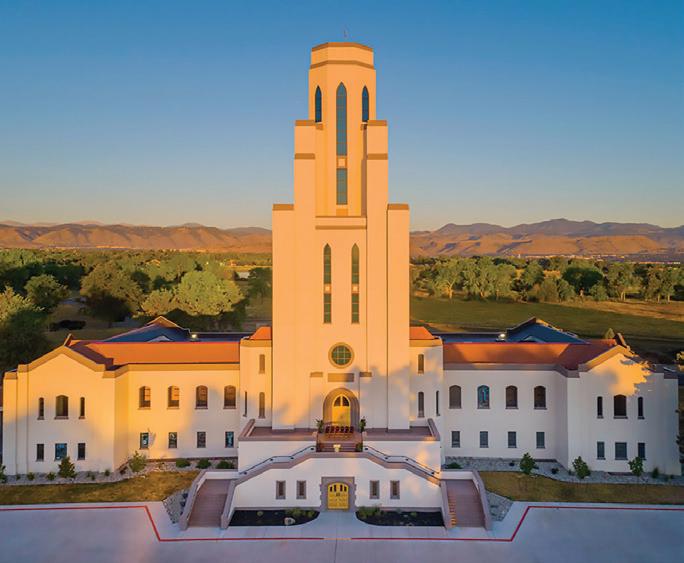


Suncor is currently in the process of reopening. Yet experts have noted that past events at similar facilities have sometimes led to unanticipated delays in reopening due to the difficulty of repairs after extreme cold weather events. In this scenario, Denver residents could expect longer delays in lower gas prices, and possibly even price increases if the shutdown were to linger into the seasonal price rise.
Some locals expressed relief at Suncor's shutdown for environmental and health reasons, but the area actually experienced increased air and water pollution that exceeded Environmental Protection Agency standards due to blowbacks associated with the unexpected closure.
But while some community activists hope the facility will remain closed, Denver residents hoping for a quick reprieve at the pump have reason for optimism.
“It’s important to remember that Suncor has every incentive to get this plant back online quickly, that’s how they make money,” De Haan said. “They are losing potential profit the longer they are shut down.”
De Haan acknowledged some economic winners presently, namely out-of-state markets and trucking companies. But he remained adamant that Suncor would want to reopen quickly.
“Suncor is the loser here,” he said. “They want to remedy the situation as quickly as possible.”
Bringing ‘Magik’ to Sloan’s Lake Neighborhood
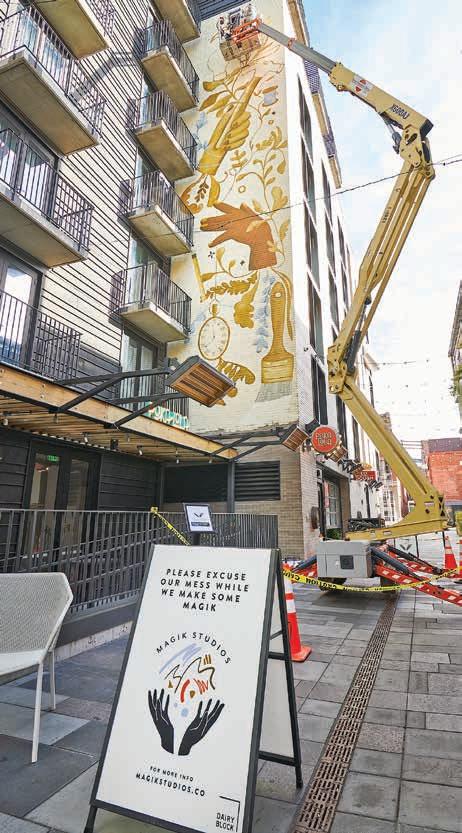 By Toni Tresca
By Toni Tresca
Artists Kristen Fogarty and Meredith Steele are creating a bit of their own magic one brushstroke at a time.
The duo created Magik Studios, and after working out of a home studio for several years, they are excited to open their first permanent studio near Sloan’s Lake at 4401 W. Colfax Ave.

“We both agree art has the power to transform like magic, and our work is about collaboration with each other and our clients,” Fogarty said. “The M in Magik is for
Meredith, and the K is for Kristen. We’re both inspired by the world around us — nature, people, experiences — and are both mixed-media artists.”
Fogarty and Steele met through a mutual friend who set them up on a “blind friend date” in August 2019 while working in Denver. To pursue careers as artists, both women — Steele from Virginia and Fogarty from Georgia — moved to the area from the East Coast. They connected over their shared interests and kept in touch after their first meeting.
“It happened very organically,” Steele said. “There was over a year between our meeting and us starting Magik. We definitely gave ourselves the time to think about what we wanted Magik to be and how to make it work for us.”
Magik Studios’ strategy is simple: enhance environments. They collaborate with business and residential clients to develop concepts that elevate the current surroundings of a space by painting colorful murals on both indoor and outdoor walls.
“Between the two of us, we’ve created so many different types of art and enjoy the variation of projects we’ve completed through Magik,” Steele said. “(We) really enjoy taking a collaborative approach with clients that allows them to bring a vision to life and create a design that feels unique to them or their business."

Additionally, the team has discovered that the diversity of their skills, including Fogarty's proficiency in graphic design and Steele's background in painting and mixed media at her solo studio, Meredith Steele Art, is a benefit that enables them to serve a wide range of clients.

“We work with paint, but we digitally design our concepts first, so we have capabil-
ities that go well beyond murals,” Fogarty said. “We aim to make our work approachable and uplifting, always taking our client’s vision and aesthetic into consideration when designing. We want to make art that draws people in and inspires the everyday person.”
By moving into a permanent studio located on the corner of West Colfax and Tennyson, only a few blocks from Sloan’s Lake, Magik Studios hopes they can create a space where they work while feeling inspired.
“We landed at this location because the space is exactly what we envisioned,” Fogarty said. “We’re both residents of the west side of Denver and love Sloan’s Lake. It simply felt right. It will equally be a workspace and
Restaurant
Continued from Page 1
last July, $2,000 a month, to lobbyist Nick Hoover specifically to address the Fair Workweek Employment Standards bill, but whether that money came from its ServSafe account could not be verified.
According to CRA’s interpretation, the bill included penalties for reducing or increasing shift hours, “retention pay” for employers who are providing shifts to new employees in place of existing employees, and additional compensation if an employee has a 15% variation from their agreed-upon work plan.
In a press release from the CRA, it indicated the association was “opposed to and extremely concerned about (the bill)” and that the bill showed “a dire misunderstanding of the way the restaurant industry operates and disregarded a fundamental pillar of restaurant employment: flexibility.”
In a survey of over 200 restaurant operators, CRA stated the average estimated cost for compliance with this bill would be $70,000 per year per location.
SchoolContinued from Page 1
behavioral issues.
Julie Rottier-Lukens, the executive director of the Office of Exceptional Student Services, said Next Steps has to leave Barrett because Monbello Career and Technical High School and Robert F. Smith STEAM Academy share one building, and the academy needs more space, so DPS deemed Barrett as the best alternative.
“We as a district and as my role in trying to ensure that we are providing the services to any child with a disability under our watch, that's part of where we have to be looking at different facility options in order to find that space,” Rottier-Lukens said.

She said she’s collaborating with DPS staff and representatives to find the best location
showroom for our work, inside and out. We have creative freedom and plan to add some Magik to the block.”
The multidisciplinary art studio's services include custom hand-painted murals, commissioned artwork and mixed-media installations. Magik Studios looks forward to working with partners in the community and hopes to be a beacon of creativity in the neighborhood.
“With fine art and design backgrounds, our services and capabilities are vast,” Steele said. “Murals have been our focus, but we’re excited to be able to offer and expand even more.”
Learn more about Magik Studios at magikstudios.co.

“The time it would take to update schedules, create and update work plans, create and approve schedule changes, and comply with the proposed three-year retention policy” are all factored into the $70,000 annual estimate, according to Denise Mickelsen, CRA communications director. This bill would have not only limited future expansion opportunities, it would have also caused menu price increases for 97% of restaurant operators surveyed, she said.
Additionally, 98% of operators indicated they would have likely scheduled fewer staff members to avoid penalties, which presented the potential for burnout in an industry that is already overburdened with lack of adequate staffing.
Colin Larson, director of government affairs for CRA, said the bill would have caused “adversarial communication with restaurant owners and their employees and was not designed with the industry in mind.”
He said although predictability with scheduling is a nice idea, the reality of the industry is that shift changes, swapping employees and the need for flexibility on both sides are an almost daily occurrence with restaurants.
for Next Steps, but a decision does not need board approval.
“We realize we haven't been in this situation before where we’re trying to find a location for a separate school,” she said.
“This is not a program that would be supervised or managed or led by any other school principal. We have hired our own director for that program. So it is operating as a separate program.”
Rottier-Lukens said one of the main difficulties DPS faces in trying to move a program like Next Steps is that it has to have the right facilities, and the district may even have to do additional retrofitting to meet those specifications.
“We're looking for certain criteria of a facility with separate entrances, no ability to share the cafeteria, and we don’t want to share any common space, hallways, restrooms, et cetera,” she said.
West Area Plan Reaches Final Stage; Near Northwest Area Close to Final Draft
By Kathryn WhiteDenver City Council’s Land Use, Transportation and Infrastructure Committee (LUTI) recently voted to move the West Area Plan, a set of guidelines for roadways and infrastructure through 2040, to the full council for consideration.
The plan is more than three years in the making and is the fourth area Denver’s Community Planning and Development (CPD) department has undertaken in its Neighborhood Planning Initiative (NPI).

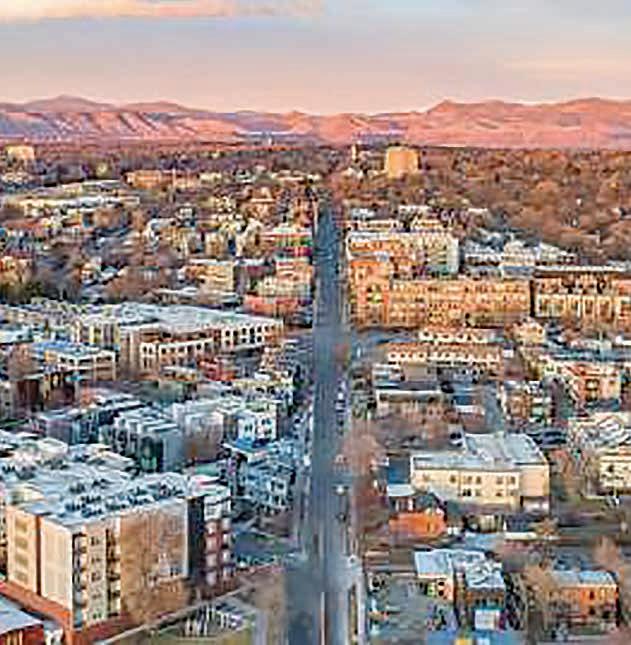
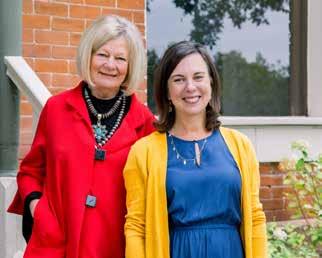
Another similar plan, the Near Northwest Area Plan, is currently going through review before a final draft is expected to be published this summer.
WEST AREA PLAN

Work toward the West Area Plan, which encompasses the neighborhoods of West Colfax, Villa Park, Sun Valley, Barnum, Barnum West and Valverde, began in 2019.

At the recent LUTI meeting to review and vote on the plan, Neighborhood Planning Supervisor Courtland Hyser emphasized extensive community participation and a few of the plan’s features.
“You’ll see the quality-of-life lens cross-cutting through all chapters,“ Hyser said. “This was in response to community feedback throughout the planning process, and specifically from our steering committee, that said quality of life is the most important thing. It needs to be the driver for all other topics, because everything affects quality of life.”
The West Area Plan is the first area plan to itemize and address historic and present inequities; and it is the first to address the role of water (gulches, ponds, streams and the South Platte River).
Council President Jamie Torres, whose district includes several of the neighborhoods in the plan, emphasized the significant role the community played in shaping it.
“Oftentimes, our engagement or even the planning initiatives themselves struggle to reach communities of color, families with multiple jobs, working families,” Torres said. “So I just want (highlight) that we partnered intentionally with Colorado Jobs with Justice to make sure that we were able to reach into the community and gather input to inform the priorities that neighbors wanted.”
Councilwoman Amanda P. Sandoval, who represents West Colfax until redistricting takes effect this year, acknowledged that the plan’s timeline was significantly affected by the COVID-19 pandemic. She thanked CPD for the way it adapted not only to the pandemic but to the neighborhoods themselves.
“You all slowed down, and gave it more time,” she said.
To access the 300-plus-page West Area


Plan, including details regarding its implementation, visit www.denvergov.org and type “West Area Plan” into the search box.
A public hearing and vote on the West Area Plan at City Council is scheduled for 5:30 p.m. on March 28.
NEAR NORTHWEST AREA PLAN
Work on the Near Northwest Area Plan, which encompasses the neighborhoods of Chaffee Park, Sunnyside, Highland and Jefferson Park, began in June 2021.
Community input was gathered throughout 2022, taking the form of online and in-person topical discussions, neighborhood workshops, a youth focus group at Denver North High School and multiple online surveys.
Currently, a 21-member steering committee meets monthly for facilitated sessions to assist CPD in refining its preliminary draft recommendations. In a recent steering committee meeting, city planners presented draft recommendations under the categories of parks and recreation, food access, small business and cultural retail, preserving and growing primary jobs, and Northeast Sunnyside.
For each category, facilitator Grace Herbison invited committee members to respond with their initial impressions. Which recommendations were they were most excited about or thought would be most impactful? And then, what was missing, and were there concerns?

In discussing ideas for parks and recreation, committee members spoke, among other things, to the advantages of improving existing park amenities over creating new parks. Dog parks were raised as an amenity sought by many in the neighborhood.
Upgrades to Aztlan Rec Center were supported by several members, though the importance of affordability was also voiced.
The community review process continues with three more steering committee sessions and a full draft plan shared with the public this summer.
In the meantime, the public can look at highlights from the current draft and opportunities to observe steering committee meetings by visiting www.denvergov.org and typing “Near Northwest Area Plan” into the search box.
The NPI began in 2017 and will create 19 area plans covering Denver’s 78 statistical neighborhoods. NPI neighborhood plans involve significant community input and are intended to guide the city in its approach to adding or improving city services and resources (e.g., zoning, parks, recreation centers, transportation, business and economic development).
Tennyson Business Corridor Unlikely to See First Cannabis Dispensary
By Miranda EricksenAlthough a cannabis retailer provided evidence of significant support for moving to 40th Avenue and Tennyson Street, the Denver Excise and Licenses director determined there are enough such businesses in the immediate area and has preliminarily denied the application.
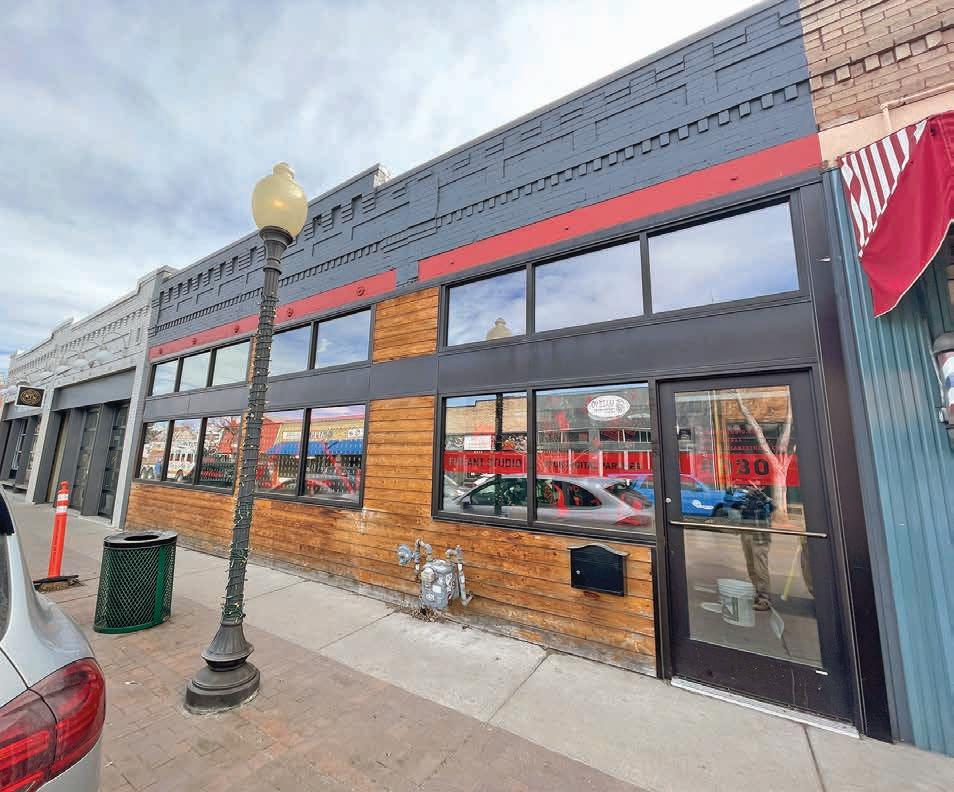
Native Roots recently filed an application with the city to transfer its cannabis retail license from 1355 Santa Fe Drive to 4030 Tennyson St. Due to the finite number of business licenses available for recreational cannabis retail operations, it is common in the industry to apply for transfers of licenses from one location to another, rather than apply for entirely new licenses.
Excise and Licenses Director Molly Duplechian made the “recommended decision” recently to deny the application, and a final decision is likely to come this month. There are at least five cannabis dispensaries within a mile or so of the Tennyson Street business corridor between 38th and 46th avenues.
In the hearing, Native Roots provided evidence of 100 signatures in favor and 20 opposed to the transfer that were acquired from a paid petition they conducted of both residents and businesses along Tennyson Street.
Additionally, they entered into a Good Neighbor Agreement with Berkeley Regis United Neighbors (BRUN), committing to only doing business within their proposed hours of operation from 9 a.m. to midnight and disposing of any waste within city and state requirements.

Supporters present at the hearing included Jon Boord, CEO of Native Roots; three Native Roots employees; one Tennyson Street business owner; and one representative from BRUN.
Supporters of the application said Native Roots has historically operated in compliance with the Marijuana Enforcement Division. The desire for more diverse, walkable and unique small businesses was also stated as a reason why the license transfer application should be granted.
They also cited the available parking along and near Tennyson Street, and said that adding a Native Roots location to the street would allow for this potential errand to be accomplished without the need for additional transportation.
To alleviate safety concerns regarding possible increases in crime, Native Roots intended to install 26 security cameras to monitor the interior and exterior of the space, but would not hire a security guard.
Erin Spies, director of compliance and regulatory affairs for Native Roots, said having a security guard on staff invites confrontation and escalation in a way that a receptionist doesn’t.
A representative for Native Roots in the

hearing could not be reached before press time.
Those in opposition specifically indicated issues with 4030 Tennyson’s proximity to Cesar Chavez Park. Although the park is a
and current resident of the affected neighborhood, 27 fellow residents of the neighborhood indicated their opposition to the license transfer.
This petition was considered to be inadmissible in evidence, however, as the petition format was incorrect and only allowed signatories to indicate an “opposed” position. Alexander’s photographs and proximity measurements were allowed to be admitted into evidence, and the physical presence of those opposed to the license transfer were considered sufficient at the hearing.
public recreation facility, it is not considered protected under state proximity laws associated with the location of cannabis or alcohol retail establishments.
According to the law, these establishments must be 1,000 feet or more away from schools, childcare facilities, alcohol and drug treatment facilities, and other licensed cannabis operations.

Others in opposition stated their concern for the potential for increase in vehicle congestion due to double parking. Residents and business owners on the street indicated that people will double park when they are intending to be inside an establishment for 10 minutes or less.
In an independent petition conducted by Rebecca Alexander, a former attorney
City Councilwoman Amanda P. Sandoval, who was present at the hearing, said that she was “very happy with the outcome” of the recommended decision. She said that the hearing was not conducted fairly to her constituents as it was held at 9 a.m. on a weekday when most people are at work.
In a clarifying statement, Sandoval said, “If the intent of public hearings is to have public participation, we should be more thoughtful about making it possible for the public to participate.”
Sandoval explained that needs and desires hearings, all of which are specifically for granting or denying licenses for alcohol or cannabis retail establishments, are some of the most complicated to conduct fairly.
She expressed gratitude for the constituents who worked alongside her on this issue.
“Community is all about coming together, and I am happy I was able to communicate in the hearing on behalf of my constituents,” Sandoval said.
To alleviate safety concerns regarding possible increases in crime, Native Roots intended to install 26 security cameras to monitor the interior and exterior of the space, but would not hire a security guard.
Suncor’s Air Monitoring Program Sparks Debate, Lawsuit Ongoing
By Trish ZornioDebates are intensifying as to whether or not Suncor meets state requirements after a new pollution monitoring bill took effect in January.
House Bill 1189 was passed during the 2021 legislative session and was signed into law by Gov. Jared Polis. Under the bill, Suncor was required to install continuous air monitors along the Commerce City refinery perimeter by Jan. 1.

But an agreement over program details has still not been reached, remaining in legal limbo after Suncor filed a lawsuit against the Air Pollution Control Division (APCD) of the Colorado Department of Public Health and Environment (CDPHE) last year.
The legal action came after APCD instructed the facility to monitor for additional pollutants and to provide additional public-access data.
A spokesperson for Suncor stated the company made every effort to work with the state before filing legal action, and that Suncor has actively made temporary efforts to meet the new requirements. The spokesperson also indicated that updates to the fenceline monitoring program would take place pending legal outcomes.
Due to the pending litigation, APCD would not comment on whether or not Suncor was meeting its legal obligations under the bill.
Attorney Ian Coghill of Earthjustice, a local environmental advocacy group, said it is clear Suncor is not meeting requirements.
“Suncor is definitely not meeting its obligations under the new law,” Coghill said. “Several of the requirements that CDPHE added to Suncor’s plan have gone into effect, including the requirements that Suncor monitor for 20 total pollutants and have a public website with all of the required functionality up and running. Suncor did not ask the court to temporarily stay these requirements while the suit
proceeds, so Suncor should be complying with them. It’s not.”
A letter from APCD to Suncor dated Aug. 12 confirms it required Suncor to monitor 20 pollutants and to provide all data reporting, including a public-access website, by Jan 1. Suncor has five optical sensor monitors along the fenceline, each tracking three compounds with limited public data access.


Other air monitoring efforts highlight ongoing air pollution concerns that could renew public health worries. Cultivando, a local community group, was awarded nearly $1 million by CDPHE in 2021 after Suncor reached a $9-million settlement for repeatedly violating air quality standards. Cultivando has since partnered with Boulder AIR to establish a fixed air monitoring site alongside a mobile operation in the Commerce City area.
Initial findings by the group provoked further debate on the effectiveness of Suncor’s fenceline monitoring, largely regardless of its ability to meet the new bill requirements. In a community presentation by scientist Dr. Detlev Helmig, the Boulder AIR program revealed detectable levels of multiple pollutants, including a benzene spike registering at over 4 parts per billion (ppb) within the last 30 days.
A document found by the Agency for Toxic Substances and Disease Registry under the Department of Human Health and Services states, “exposure to 0.4 ppb in air over a lifetime could cause a risk of one additional cancer case for every 100,000 exposed persons.”






Helmig noted the differences in findings were due to methodological disparities between Boulder AIR’s tracking and Suncor’s. He suggested Suncor’s monitoring approach is likely to seriously impede their ability to accurately reflect pollutant levels from their facilities that reach surrounding communities.

Among Helmig’s chief concerns were the height and proximity of Suncor’s fenceline monitors to the stacks, which he noted as the main source of air pollutants, and the subsequent likelihood of most pollutants wafting above the monitors undetected only to later fall into neighboring communities.
More concerns included a less sensitive pollutant threshold by Suncor given their use of parts per million in public reporting versus parts per billion, a mathematical flattening of pollutant spikes based on Suncor’s use of average pollutant concentrations over hundreds of meters instead of more localized measurements, and the overall monitoring of only a few pollutants.
Fenceline monitoring requirements under a bill that went into effect Jan. 1 have started a debate between Suncor, which has a refinery in Commerce City, and state air quality officials as well as local environmentalists.
Publicly available pollutant-source modeling by Boulder AIR monitoring suggests much of the pollutant tracking emanates from the Suncor facility direction.





A Suncor spokesperson confirmed the facility’s monitors employ the detection of three pollutants over hundreds of meters, noting this approach allows Suncor to monitor more of the fenceline.
The Suncor spokesperson also acknowledged that Cultivando’s air monitoring programs “measure[s] the quality of air where people live in a specific neighborhood or geographical area, using technologies to measure compounds from a variety of sources,” a suggestion that Suncor considers anything beyond the fenceline as not conclusively attributable to their facility.



As debates continue regarding community safety, Suncor announced it intends to fully reopen after closing in December due to equipment malfunctions and two separate fires. It reopened its plant 2 in February and plans to reopen plants 1 and 3 in the coming weeks.
During this time, Suncor said there may be increased flaring, noise and traffic, but it would try to keep disruptions to a minimum.
Suncor is also said it will continue to monitor air quality in the immediate area through CCND Air ccnd-air.com and the fenceline monitoring program suncor.data.spectrumenvsoln.com/.
SINCE 1970



Environmentally Friendly Services
TESTIMONIAL
“I’m a big proponent of local business, and Carousel Cleaners will continue to earn mine. From the friendly staff, to their attention to detail of my weekly drop of suits, slacks and shirts; I could not ask for a better dryclean partner. I highly recommend.” – Blake W.
We provide reliable, efficient flexible and affordable dry cleaning service for virtually all items of clothing and household items.

City Council At-Large Candidates Vie For Two Open Seats
For the at-large Denver City Council candidate race, we asked each candidate two questions.

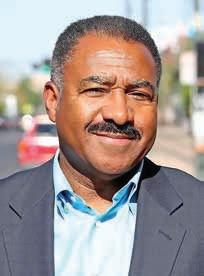
The names are listed by order of appearance on the April 4 ballot, as determined recently by the Denver Elections Division. The two candidates who either did not respond or opted out of the questions were Dominic Angelo Diaz and Janelle Jenkins.

The answers to each question are designated as:
A1. What Denver issue(s) are most important to you and why?
A2. What traits make you the best candidate to represent the city at-large?
JEFF WALKERA1. The creation of safe streets is my personal top priority and folds into the top priority of the people I meet. The viability of the transit system and sidewalk network determines the quality of options for housing, employment, healthcare and education. Approximately 70,000 households in metro Denver do not have an automobile available. This means that safe streets for walking, rolling or biking and reliable transit are an absolute necessity for a strong economy and high quality of life.
The benefit of safe streets does not stop at the city boundary. Safe streets are good for Denver and the region because increased access to transit improves air quality through lower emissions. Safe streets improve water quality through less chemicals leaking from cars and washing into the South Platte River. Safe streets reduce vehicle crashes. Over 300 persons have been killed or seriously injured in Denver every year since at least 2013. We can make Vision Zero a reality by creating safe streets.
A2. What traits make you the best candidate to represent the city at-large?
I believe every at-large candidate would serve the city well. However, the trait that sets me apart is my passion for urban planning. I have 30 years of experience in public involvement, transportation, land use and infrastructure. I helped start Rosedale’s registered neighborhood organization and later served as its president. As an appointed and twice-elected member of RTD’s board of directors, I oversaw the budget of the country’s third-largest transit agency. At the national level, I served on the American Public Transportation Association’s leadership development committee, finance committee and board of directors. And professionally, I’ve acquired property and permits for infrastructure projects for 20 years.
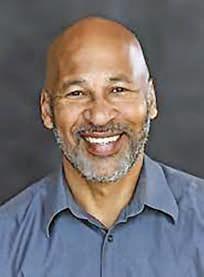
My service at the neighborhood, citywide and national levels will certainly be an asset on Denver’s City Council.
A1. 1. Affordable housing — Increasing affordable housing will positively impact Denver’s economy, improve health outcomes, and create housing stability for individuals and families experiencing housing insecurity.
2. Economic development — Providing new employment opportunities to grow Denver’s workforce and developing programs for people to start new businesses that will enhance our economy.
3. Community representation — Ensuring that all of Denver’s diverse voices are heard and that policies aren’t made for neighborhoods without genuine community input.
A2. 1. My experience — I have worked with 400+ nonprofits to address every major issue facing our city.
2. My accomplishments - I have built a reputation for getting things done whether it was changing state law to support individuals with disabilities get access to education, getting affordable housing units built, or helping incubate 22 businesses including one that has positively impacted more than 8.5 million lives.
3. My training — I am a trained facilitator who builds collaborations to address difficult issues and create solutions. I am also a trained social worker who was taught how to listen first.
4. My personality — I am personable, approachable, humble and accessible.
5. My rationale — I want to address systemic issues because Denver needs improvements and I believe that I can best make these changes from the position I am seeking.

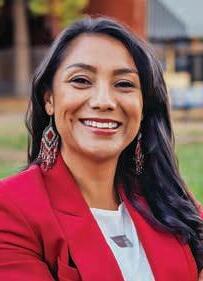
PENFIELD TATE
A1. Crime, housing, climate change and transit are the top, inter-related challenges. I co-chaired the community committee that led to creating Denver’s Independent Monitor to hold rogue cops accountable. Costly settlements over police misconduct gives good cops a bad name, undermines public trust and compounds personnel shortages. I support expansion of Denver’s Support Team Assisted Response (STAR) Program to help persons with substance abuse and other mental illnesses. I will protect open space like the former Park Hill Golf Course that should complement — not compete — with sustainable density. A public finance attorney, I with work with developers and neighborhoods to turn empty lots and empty buildings into housing accessible to real families and a beacon of hope to the unhoused. I will work with regional gov-
ernments and nonprofits to expand public transit options that are convenient, affordable and safe while enhancing local mobility, including sidewalks and dedicated bike lanes.
A2. My extensive community, executive, legislative and legal experience has confirmed my commitment to collaboration and consensus to achieve results — without compromising principles. I represented my neighbors in the Colorado State Senate and House, worked for Mayor Peña, and directed a state agency for Governor Romer. I understand the complexities of development from being a public finance attorney for Denver Urban Renewal Authority, Denver International Airport, RTD, Union Station, Lowery and numerous other projects. Starting my community service at the Five Points Community Center, I’ve served on various boards, including the Denver Water board, the Colorado Housing and Finance Authority and Ability Connection.
SARAH PARADY
A1. Housing, homelessness, community safety, climate change and transit. All of these issues are really about our health and well-being, and there is a remarkable level of agreement from folks I talk to that these are the big five. When I think about the safety of my family from now into the future, these are the same issues that come to mind.
My core belief is that when we leave members of our community behind, we are all impacted. I think our homelessness crisis and behavioral health crisis make that clear. The flip side is that when we invest in each other, it’s good for everyone. We haven’t been doing that sufficiently, and I am determined to reorient city government to meeting the basic needs of everyone who lives here.
A2. I love people. I love our city. I’m curious, warm, empathic and excited about what we can do together. You can trust me to take clear positions, communicate what I believe and why, and accept feedback — even tough feedback — without defensiveness.
In addition to running my small public interest law firm for many years, I have led several large bar associations, including the Colorado Women’s Bar Association with over 1,500 members and a 50-woman board, and chaired other nonprofit boards. In any leadership role, my first move is to learn from everyone who has something to teach and surround myself with other strong leaders with skills and backgrounds different from my own. My second is to think structurally about where an organization needs to do some hard work to function better. And my third is to lay out clear processes so that people are empowered to do that work together.
A1. Denver faces two primary interconnected challenges: a lack of affordable and stable housing, and a desperate need to address the root causes of crime. We know that access to stable housing is a major factor in health, financial stability and general well-being. Bringing down the cost of rent, creating housing options for people experiencing homelessness and increasing renter protections are the first steps to making our city a place where people can put down generational roots. It’s also the first piece of addressing crime at the root, and must be supplemented with a significant investment in our behavioral health services. There are not enough providers in the city and county of Denver, and I will lead a coalition to increase that number significantly so that anyone who wants or needs treatment can get it. We must also look at targeted investments with proven success at reducing violence, like community engagement opportunities and outreach to chronically disinvested areas of the city.
A2. My family has been serving Denver for generations. We’ve been displaced and priced out, we’ve marched for justice in the streets, we’ve served as city employees and small business owners and nonprofit leaders. I’ve carried that legacy in my own career, helping Denver kids and families access basic services and essential behavioral health care for the last twenty years. And as a state legislator, I’ve proudly represented Denver’s Northside and Westside, championing over 60 bills to increase the stock of affordable housing, make transformational investments in our behavioral health system, hold corporate polluters accountable, fight for workers’ rights, and increase protections for renters and tenants. I’m ready to continue that service in Denver, to focus my work on the city that raised me and continue making Denver a city where working people can put down generational roots.
TIM HOFFMAN
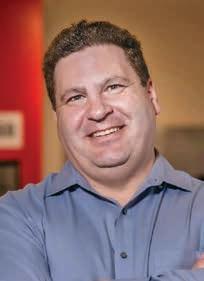
A1. As a prosecutor for the past six years, I have seen firsthand the devastating impact that crime has on our community. It robs victims and their families of their sense of security and destabilizes entire neighborhoods. Holding accountable those that prey on some of Denver’s most vulnerable citizens has been a focus of mine. At the same time, we must address the root cause of much criminal behavior. This means increased funding and programming around addiction treatment, mental health supports
See CITY COUNCIL, Page 9
City Council
Continued from Page 8
and economic opportunity. We can prevent much of the crime from ever taking place by proactively diverting and supporting Denverites who are struggling.
We must also do more to boost the stock of affordable housing in our city. Homelessness is caused, in part, by expensive housing market. Bolstering the supply of housing while also providing direct supports to get people into housing and keep them there benefits the entire city.
A2. I truly believe in servant leadership and approach the role of city councilor with humility. I have deep experience in the criminal justice system and have priorities as it relates to housing, transportation, climate change, and many other areas … but I also know that I am not an expert in all topics and don’t have the lived experience that many of my neighbors across Denver do. While I will fight for my priorities and values, I will always have an open door to anyone in the community who wants to speak with me. Leadership, if done well, involves listening to others, especially when they have a different point of view or perspective.
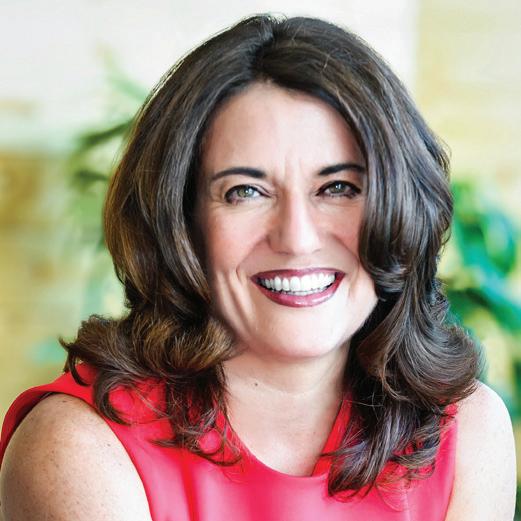

A1. I believe the atlarge City Council seat is uniquely positioned to build consensus across district boundaries, provide support to district offices and interface closely with the executive branch to bring citywide solutions to the challenging issues of the day. The 2023 election is the most consequential in 40 years. After traveling throughout the city and conducting numerous conversations with community leaders, I have outlined my eight-point roadmap to get Denver on the right course including:
(1) Investing in all neighborhoods; (2) Promoting effective, efficient city government focused on customer service; (3) Confronting crime and improving neighborhood safety;
(4) Meeting Denver’s housing needs through choice and opportunity; (5) Implementing a data-centered approach to address homelessness through more services and strengthened accountability; (6) Streamlining our electoral process to increase participation; (7) Engaging more in economic development; and (8) Getting existing big projects done and avoiding new red tape.
A2. I am running for Denver City Council at-large because we need a citywide perspective and citywide solutions to the most vexing issues of the day. Denver needs council members who understand the importance of regional partnerships and the capacity to

build relationships beyond city boundaries. All Denverites deserve stability, predictability and steady leadership. I am keenly aware of this need and commit to delivering these qualities upon taking office. I have crafted the art of the turnaround — enhancing stable organizations and saving others from collapse. This is the most consequential election in 40 years, and Denver does not have time for on-the-job training. It’s time to elect those with the experience and know-how to get Denver on the right course and swiftly. We are at an inflection point. I believe I am best suited to bring stakeholders together to move Denver forward with pragmatic solutions and solid leadership.
WILL CHAN

A1. 1. My campaign plans to fill Denver’s GAPS, making our city Greener, more Affordable, more Prosperous and Safer.

Green: Address transit, climate and pathways to green jobs.
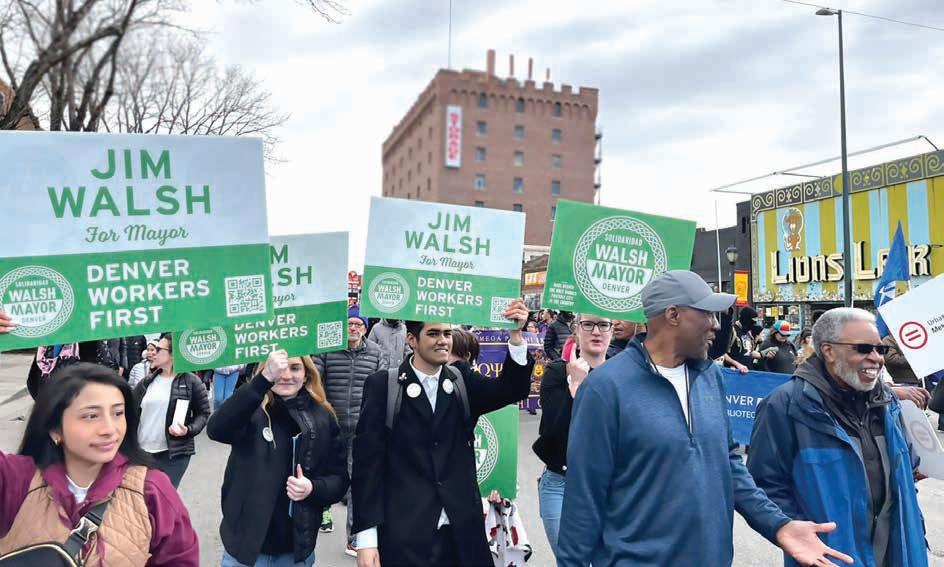
Affordable: Work to update housing options and policies to support housing affordability, support working families by improving access to childcare among other services, and protection for contract workers.
Prosperous: Overhaul policies for big and small business who call Denver home, streamline permitting and licensing processes, and incentives for businesses providing social good.
Safer: Expand alternative interventions to policing, invest in civic engagement opportunities for youth interventions to prevent crime, and investing in programs proven to reduce recidivism.
A2. I bring over 20 years in government, labor and education advocating for working families. As a city of Denver public servant, I’ve managed budgets including the distribution of $154 million of federal funding to help residents, businesses and neighborhoods. I developed programs, many of which are still in existence today, that lifted hard-working communities, supported residents, business owners, and welcomed firstgeneration Americans.
I am a Denver-born son of immigrants, who came here to build a safe, new life which was only possible through the opportunities they encountered in our city and the support of the community. I have seen the city that raised me changed dramatically. The same opportunities for upward mobility that my parents used to work themselves out of poverty, are not as accessible today. My capacity as a public servant and my personal experiences have instilled the skills and perspective needed to truly understand the issues Denver faces today and guide me towards practical solutions.
Voting Information:
• Ballots went into the mail on March 13th
• Ballots must be received by the city by 7 p.m. on April 4th
• If you choose to mail your ballot back, the Denver Elections Division recommends mailing it back no later than March 27th.


• Denver has 43 ballot drop off locations and an online search tool to help you find the closest in person voting location if you misplace or otherwise need a new ballot.
Visit Denvergov.org/elections for more information
Denver to Vote on Three City Council Initiatives
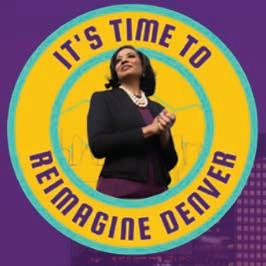 By Eric Heinz
By Eric Heinz
Denver voters will have three questions to decide in the April 4 municipal election, which include tweaks to the city’s zoning charter as well as the Board of Adjustment, and they will decide whether to lift a conservation easement on the former Park Hill Golf Course to make way for large development.
2M: BOARD OF ADJUSTMENT
The bill was brought forth by District 1 Councilmember Amanda P. Sandoval and AtLarge Councilmember Robin Kniech as well as Zoning Administrator Tina Axelrad.
Sandoval described this as “phase two” of modernizing the Board of Adjustment after the City Council approved a reorganization of it in 2022.
The Board of Adjustment essentially hears appeals for zoning and building adjustments that have been administratively denied.
Measure 2M reads as: “Shall the Charter of the City and County of Denver be amended concerning zoning to remove existing Charter language regarding the Board of Adjustment and require that the procedures for appeals, variances, and exceptions from the zoning code be addressed in city ordinance instead of in the Charter?”
“What we confirmed … is that we can’t actually change the way the (Board of Adjustment) work is done without modernizing and updating the charter,” Kniech said. “That would actually change the details of how the work is done.”
What the ordinance asks is whether to strike out a long section of the charter and replace it with order that the council will draft a new set of responsibilities for the board that include appeals for when someone alleges an error of a decision made by an administrative official, variances from the strict application of zoning regulations and a set of exceptions to those rules.
If the ballot measure is passed, Kniech said an amendment to modernize the Board of Adjustment’s work could come before the council by June. That would include changes to the appeals process, variances to the city code, and a guide for policies and procedures.
The reason for the ballot measure is because the city council can’t make those adjustments unless the city charter is first approved to be changed by the voters.
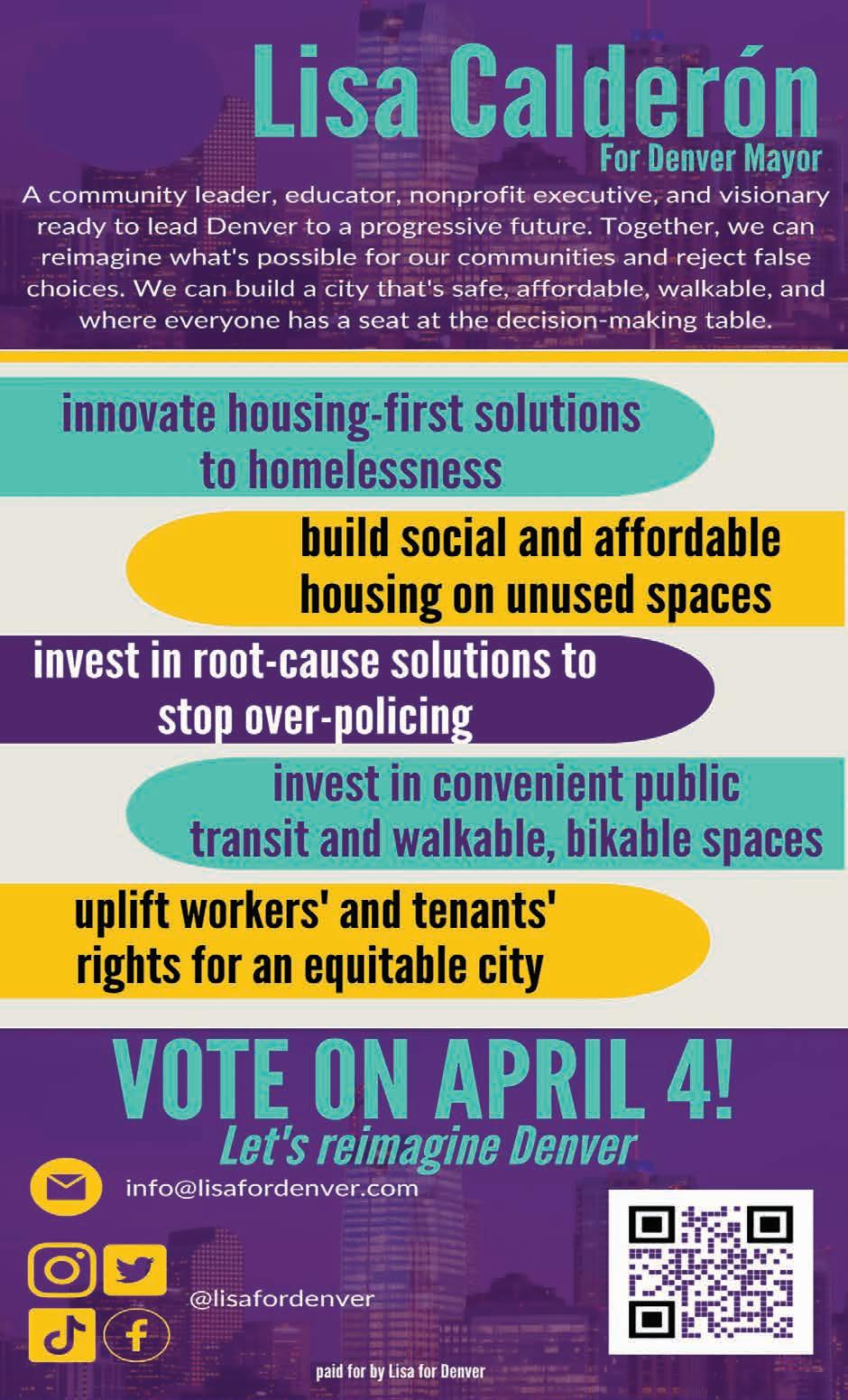
If the measure passes, City Council has proposed what it called “common sense changes,” like length of Board of Adjustment representative terms and allow for some administrative staff approvals of certain exceptions.
The goal of the ballot measure is to allow the council to expand on the city’s definition of a 100-year-old “hardship” standard to allow consideration of “reasonable requests” that promote preservation of existing buildings, sustainability, affordability or other city-adopted plans, according to a presentation on the measure.
This would allow for greater efficiency by managing most common, non-controversial minor requests as administrative while prioritizing Board of Adjustment review for complex, more nuanced or larger variances, according to the presentation.
2N: CITY ZONING AUTHORITY



Measure 2N reads as: “Shall the Charter of the City and County of Denver be amended to clarify City Council’s authority regarding zone districts and to require that zoning protests can only be initiated by property owners in Denver?”
Essentially, if voters approve the ballot question, which was also brought forth by Sandoval and Kniech, it would clarify the council’s authority on zone districts, but it would not apply in this instance to historic or business improvement districts or any other special district.

“Keeping your charter up-to-date is a tough task because it becomes important and urgent when something conflicts with policy that matters to people on the ground, when folks
are wanting to get a variance to update their property and they can’t because the charter is outdated,” Kniech said.
Certain legal challenges in recent years, particularly Sandoval alluded to in her district when a historic district was established in Packard Hill that was recently reversed by a court decision,, have made this adjustment necessary. She said she hopes the changes will resolve future issues such as ones that pertain to zoning districts.
The bill would also prohibit the ability of people living outside the city of Denver to file petitions or appeals against zoning district decisions and would only allow Denver property owners to do so.
City Council members said they welcome anyone to speak at public comment sessions regarding any issues, but only Denver property owners could file protests against them.
MEASURE 2O: PARK HILL CONSERVATION EASEMENT
The voters will decide whether the easement can be lifted to make way for several thousand residences, some of which would be income-restricted, as well as a grocery store, retail and other businesses. The developers have also pledged to keep 100 acres of the property as open park space.

Measure 2O reads as: “Shall the voters of the City and County of Denver authorize the release of the City-owned conservation easement on privately owned property known as the Park Hill Golf Course, which requires the land to be used primarily for golf related purposes, and allow for commercial and residential development, including affordable housing, and public regional park, trail and open space?”
As of March 13, the developers’ committee Yes for Parks and Homes has poured in $492,085 in support of the campaign, which has manifest into internet and other advertising, during this election cycle, and Yes for Parks and Open Space, which is backed by Save Open Space Denver, has raised $105,890 in opposition.
Save Open Space Denver, along with 19 other plaintiffs, filed a lawsuit in February against the city, Denver City Council and a subsidiary of the Park Hill Golf Course developer Westside Investment Partners, Inc., which is working with The Holleran Group on the project.
Colette Carey sent out a prepared statement on the lawsuit on behalf of EJ Reilly & Associates, which is working with Save Open Space Denver.
This lawsuit objects to the City Council approving Westside’s rezoning application and what they see is “giving the green light to a development and land exchange agreement” between the city and Westside.
“We believe that this suit gives a voice to the citizens of Denver who have been ignored and overruled by way of illegal processes over the past four years,” Woody Garnsey, a retired attorney, said on behalf of Save Open Space.
SOS is arguing that getting rid of the conservation easement is illegal because “a conservation easement cannot be extinguished under Colorado law without a court order that — based on changed conditions on or surrounding the Park Hill Golf Course land.
Robert Greer, an eviction attorney who supports Measure 2O, said the lawsuit filed by Yes for Open Space is similar to the one filed in 2021, when the organization alleged the city could not work with developers on the project until the easement was completely lifted.
Greer said at its peak, Park Hill Golf Course used about 100 million gallons of water a year when it was in operation.
“People are acting like it’s a nature preserve, but there’s non-native grass, older trees, but the real issue is this is infill development, the opposite of sprawl,” Greer said.
Auditor Candidates Make Cases to Be Denver’s Next Watchdog
By Eric HeinzTwo candidates vying to be Denver’s next auditor are taking aim at the office by touting their varied experiences.
Current Auditor Tim O’Brien, a certified public accountant, was elected to the office in 2015 and re-elected in 2019. He would be term-limited if he is elected once again. During his tenure, he highlighted his more than 40 years in public auditing, having been the state auditor for 11 years.
“There is no other candidate, and there hasn't been a candidate for a long time that brings that experience to the table,” O’Brien said. “I think I brought this office to a whole new level, both on the audit side of what we do and on the labor wage law enforcement that we do.”
Over his career, O’Brien said he has completed more than 1,000 audits, which included issues of mental health services in jails, affordable housing, homeless services, citywide equity and short-term rentals.
One of the major audits O’Brien said his office is looking into is the over-budget Great Hall project at Denver International Airport, and his office intends to release a report sometime in April on it.
He said cyber security audits have also become increasingly important in the last six years, and his office has looked into how Denver can successfully implement its new weekly recycling pickup programs, which recently found the city has a lack of drivers and an aging truck fleet.
“I would say there are some departments that really welcome the auditor; technology services is a great example,” O’Brien said. “There are some departments that just don't like the audits, I know there are, but I really think that the leadership knows that we kind of get to a better place with this kind of feedback. I can point out that there needs to be some refinement of policies, and that gets us to a better place. So I think we've got a good relationship with most of the departments.”
Another key achievement O’Brien said was his office’s ability to adequately address wage theft as well as prevailing and minimum wage compliance. The City Council signed an ordinance in January that addresses those problems. He said with minimum wages rising, the number of people the office covers has doubled from 60,000 to more than 120,000.
“That’s been a significant lift on our part, but I think the results of what we’ve done in prevailing wage and minimum wage, we’ve returned millions of dollars to people that earned it under the law, and no other auditor can say that,” O’Brien said.

Eric Clarke, who is challenging O’Brien, is a manager in commercial financial advisory and risk practice with Deloitte, and served on the 2020 U.S. Presidential Transition Committee and the boards of Mile High United Way and the Denver Health Foundation.

Clarke said the over-budgeted Great Hall project at Denver International Airport was one of the things that made him want to run, as he said he’s overseen multi-billion-dollar projects in his profession.
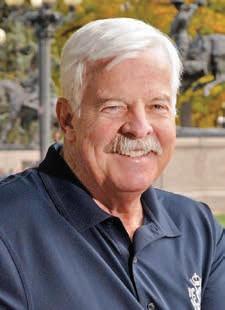
“Typically, those construction audits are at the contracting phase, so before you even break ground, you have oversight, but they waited four years,” Clarke said.
As auditor, Clarke said he would create a division of an ombudsman, someone who could do quicker reviews and “spot checking” audits that he said could produce faster results.
“If something goes wrong in the city, we could be able to get in there very quickly, and whether there’s a full audit in addition to a spot review, we would have very quick answers for management and the public on what went wrong,” Clarke said.
O’Brien filed a lawsuit against the City Council in March 2022 over an amendment it made that repealed the office of the auditor’s subpoena power, which he described as a way to “efficiently access information when auditing external parties related to city projects.”
At the time, O’Brien was quoted in a press release from his office calling the council’s move “a mistake,” but Clarke said the lawsuit was unnecessary.
“I believe there’s been a lapse in judgment, and the auditor being asleep at the wheel, suing City Council over a disagreement that very easily could have been solved just through negotiating in good faith,” Clarke said. “I think it was a failure of leadership.”


Clarke also said he thinks the current auditor’s office is lacking in long-term strategies.
“I just frankly have a different viewpoint about what an internal audit should be,” Clarke said. “In my view, as an auditor in the private sector, (an audit) should be focused on results. I think he's taking the office as more of just focused on legal compliance and finances, which are also important aspects as well, but I think that performance piece is really key.”
Clarke said although the city has spent millions of dollars on addressing homelessness, he said Denver residents aren’t seeing the results of that funding as thousands continue to live on the street on a nightly basis.
“What's the bang for buck? What program is effective? What’s not effective and how could it be effective? I think that's where audits play a key role, and that’s not what we’ve been getting.”

tHe finAL round IN THE FIGHT TO Preserve oPen SPACE STARTS NOW!
Referred Question 2 O is a deliberate attempt to mislead voters by convincing them to give away the City-owned Park Hill Golf Course land perpetual open space and recreational conservation easement to a private developer. it’s our easement - our development rights. Don’t let the City give that away to benefit a private developer to the tune of $60 million.
• Build Around not on the invaluable Park Hill Golf Course land. Affordable housing should be built on land across the street and next to the 40th and Colorado Train Station where extensive dense mixed use development will take place. There is also an additional 7 acres of vacant land next to the PHGC land.
• In November of 2021 Denver voters citywide - and especially in the precincts around the Park Hill Golf Course land - supported preserving the Park Hill Golf Course land conservation easement and protecting its open space by defeating the Hancock-backed Measure 302 - BY A 2 TO 1 MARGIN!



Build
Once green space is gone, it’s gone forever. Don’t Forget We Voted to
AROUND PHGC, not ON it!
LET’S CONTINUE WHAT WE STARTED:
Made changes to the Denver Zoning Code which supported viable mixed development along commercial corridors and the diversity of housing op ons in Northwest Denver.
Advocated for the preserva on of the historic character of Northwest Denver and demanded new inll development incorporate that inherent character.


Formally recognized those who were here before us and acknowledged their contribu on and memory through the naming and conserva on of our public spaces.
Facilitated stronger es and communica on between the diverse Northwest Denver community and the police, re, and paramedics, built on the founda on that all neighbors deserve equal jus ce and respect.
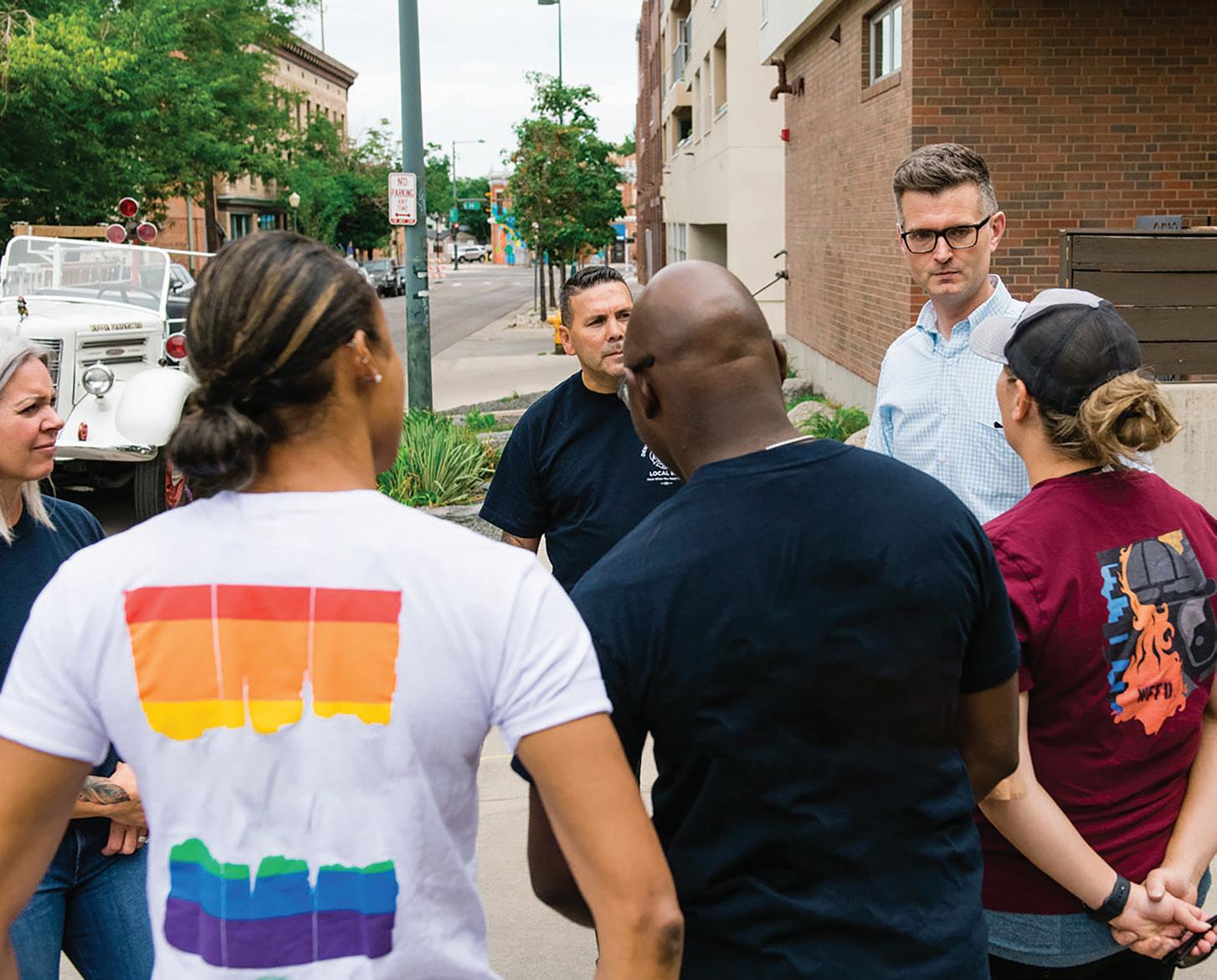
Improved mobility and supported alternate means of transporta on to maintain a safe and healthy community for pedestrians, bicyclists, and vehicles.
“We have accomplished so much during my rst term. But, we have so much more to do! That is why I am asking for your vote once again on April 4th!”

Please visit my website for a list of accomplishments and endorsements!
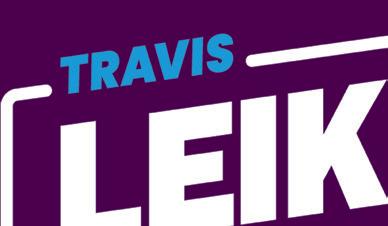

www.AmandaSandoval.com
@SandovalforCD1 #VoteAmanda #Amanda4NWDenver

District 1 City Council Candidates Make Their Final Cases
 By Eric Heinz
By Eric Heinz
Now less than a month away from the April 4 municipal election, the two candidates in the District 1 City Council race spoke with The Denver North Star about what what they believe makes each of them the best candidate overall.
The names and responses of the candidates appear in the order they are appearing on the ballot.
AVA TRUCKEYTruckey is leaning on her experience as a business owner in Denver, and she said she would want to support micro-business owners in the district in operating and thriving, particularly helping them in any permitting processes and essential financial assistance.
“Some of the stuff that I experienced in terms of licensing and working with the city, it gets really convoluted and isn’t super easy to navigate,” Truckey said. “I would like to see some (better) accessibility around that so that it’s not so intimidating for folks, but also for folks whose first language isn’t English.”
Truckey said she would also be in favor of expanding any programs within the city that would help small businesses.
“The way it is right now, it gets confusing in terms of the rules, the fees, license requirements, and I think that it ends up really being a deterrent to folks that have a vision or have a dream from even getting anything off of the ground," she said.
Truckey said she would work with Denver’s Excise and Licensing department and be involved in the City Council’s process of approving the mayor’s budget to streamline an easier procedure for people when they are ready to open a business.
If elected, she said her first choice for being appointed to a City Council committee would be on the Business, Arts, Workforce and Aviation Services committee.


Truckey said there are some issues that are more important to her than others, and she said she would work hard to come up with compromises to get things done.
“As a new candidate and all, somebody that doesn’t come from a political background, I think that it is important for me to listen more than I speak,” Truckey said. “But I want to listen to my community and listen to what folks actually need, and I think that that is something that is important.”
“There’s a very specific reason why I chose to run for City Council,” she said. “I have my belief system and my own convictions,

but I do think that there has to be some level of compromise if we’re going to make sustainable change.”
AMANDA P. SANDOVAL, INCUMBENT

Sandoval said her first term in office was rewarding, but also came with challenges and was a learning experience. She said weathering the COVID pandemic really fractured the community and that she wants to continue to reconnect people.
“I didn't exactly know what my role was, and I found it by vaccinating our community and making sure that northwest Denver residents, especially our most vulnerable residents who are frontline workers, who are people of color, had access to the vaccine,” Sandoval said.
Sandoval said her office gave financial support to registered neighborhood organizations during that time to host meetings online and to do outreach virtually and through mailed newsletters. She said getting the name of La Raza Park established was also a challenge during the pandemic because they needed petition signatures, but the park was eventually renamed in 2021.
Sandoval said getting the Tennyson Street design overlay passed, which made several height and building use restrictions along the corridor from about 38th to 46th avenues, was one of her top achievements in city planning. The overlay is intended for the business corridor to retain accessibility to small businesses and its walkable areas.
Other achievements Sandoval talked about were rezoning many neighborhoods in District 1 to allow for the construction of accessory dwelling units and reshaping the Board of Adjustment
“One of the things I’m really proud of is I'm the first woman to ever have chaired the redistricting process in Denver,” Sandoval said. “We did it in a very equitable way. We went to the community and (surveyed) communities of interest, which had never been done before, and we added those as a base layer in the GIS system so that was very intentional.”
Going forward, Sandoval said she feels like she still has work to do in the community and that she should be re-elected to finish what she started.
“All of these initiatives that I'm working on and that I've done over the last three-and-a-half years are all people-powered; they come from the people,” she said. “I'm just working (for) the residents of northwest Denver, and they helped me set the agenda.”
Candidates
some levto make INCUMBENT said her first was realso came challenges and was experience. weathering the pandemic really communiwants to role was, and community and residents, residents who people of color, said. financial suporganizations online and through mailed name of La challenge needed peeventually Tennyson Street made several along the avenues, was planning. business corribusinesses talked about neighborhoods in Disof accesthe Board proud of is I'm chaired the reSandoval said. We went to communities done before, in the GIS she feels like community to finish
I'm workthe last people-powshe said. residents of helped me set
Denver Mayor’s Race Packed with 17 Candidates
By Eric HeinzNot sure who to vote for in Denver’s mayoral election? You’re probably not alone.
A large field of 17 candidates will dominate the ballot on April 4, with a likely runoff coming after that.
A recent poll, first reported by The Denver Post, from Republican firm Cygnal and Democratic firm Chism Strategies, commissioned by A Denver for Us All, showed a survey of about 400 likely Denver voters did not give more than 8% of support to any mayoral candidate.
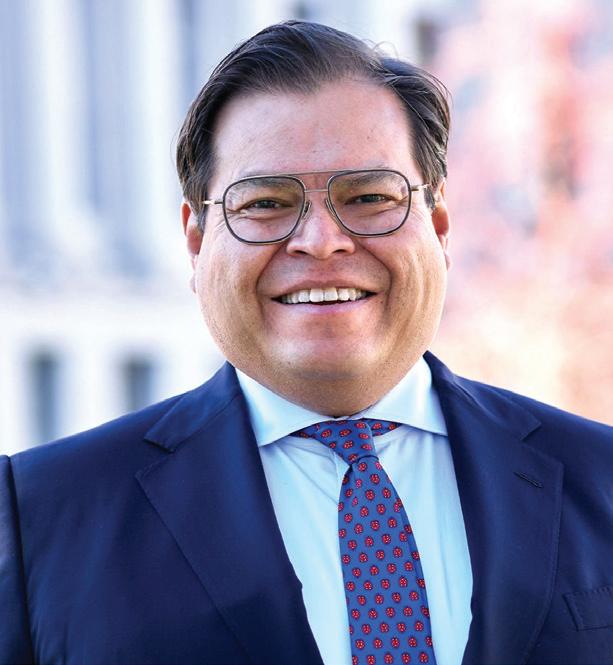

Most respondents said they have not decided who they'll support. One candidate led with 7.6%, but the margin of error was 4.9%. A candidate needs at least 50% of the vote to be elected outright.
The candidates are Al Gardner, Andy Rougeot, Aurelio Martinez, Chris Hansen, Deborah “Debbie” Ortega, Ean Thomas Tafoya, James Walsh, Kelly Brough, Kwame Spearman, Leslie Herod, Lisa Calderón, Mike Johnston, Renate A. Behrens, Robert Treta, Terrance Roberts, Thomas Wolf and Trinidad Rodriguez.

A recent mayoral debate was hosted by The Denver North Star along with Regis University and several neighborhood associations. The first question was aimed at making housing more affordable, particularly for young people to establish their lives in Denver, and answers ranged from raising supply to introducing rent control policies (a bill for which is going through the Colorado Legislature now).
One of the key topics that’s been
critical in politics nationwide is how to handle the homeless crisis Denver and other major cities face. The second question focused on addressing unsanctioned encampments.
One idea offered was to increase single-room-occupancy housing, such as purchasing unused hotels and motels. Another was to continue increasing housing with wrap-around services, such as for people with drug addiction issues.
Some candidates described camping bans as criminalizing people simply because they are unhoused, and many of them have mental health issues such as schizophrenia.
Some candidates said the city should provide more services for the unhoused, but at the same time it cannot be lax in addressing those who abuse government resources only to become a public nuisance.
Candidates also weighed in on how to reduce violent crimes and how to manage growth and gentrification so neighborhoods won’t get upended by new development.
To watch the full debate to get a better sense of the candidates, see the video of the debate embedded in this article at denvernorthstar.com.
The Denver North Star will provide more comprehensive coverage of the candidates who are elected to a run-off, if the additional election is necessary.
MAYOR Building Our Future Together
Fighting to solve Denver’s homelessness, public safety, and affordability challenges.

Building a city for all to thrive, regardless of their neighborhood.
Trinidad4Denver.com
Vote for by April 4, 2023
Paid for by Trinidad4Denver Lisa Klapper O’Connor, Treasurer
Enhanced SNAP Food Benefits Coming to an End
By The Denver North Star StaffThe Denver Department of Public Health and Environment (DDPHE) recently announced that February was the last month temporary additional Supplemental Nutrition Assistance Program (SNAP) benefits, also known as emergency allotments, would be paid.
The department stated this will have an effect on households that have been receiving the additional emergency allotment for the past two years. The federal pandemic-era benefit was implemented to help low-income families and individuals buy groceries.
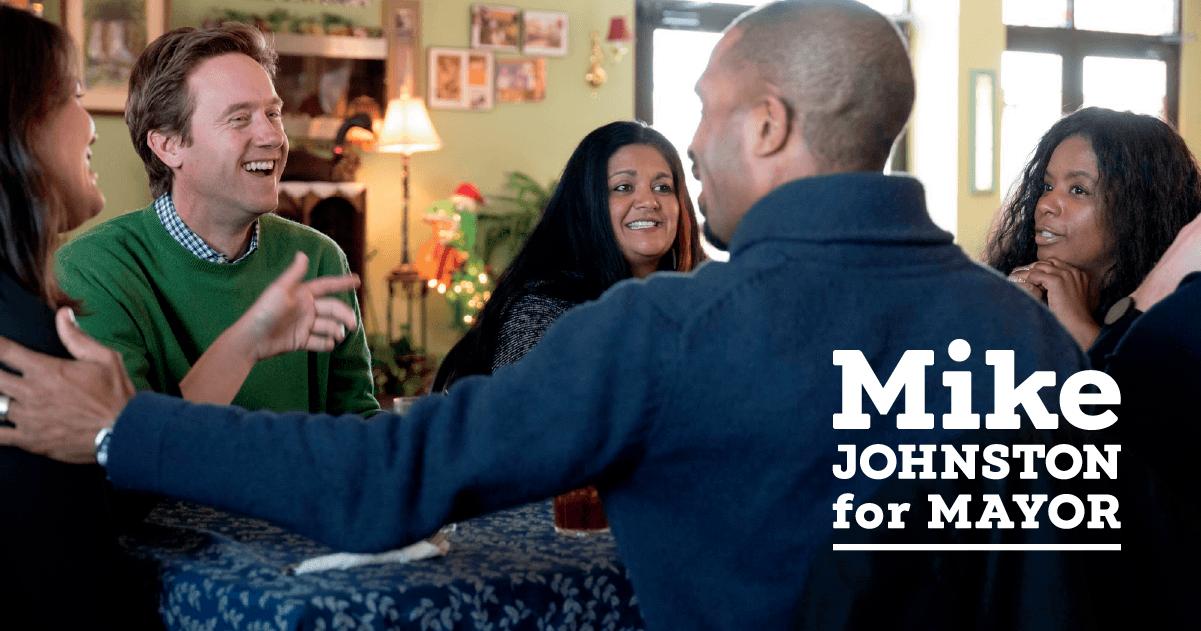
Beginning March 1, 2023, SNAP households will see a reduction in benefits to the pre-pandemic monthly amount. A link to those amounts can be found in this article at denvernorthstar.com.
To help reduce the effects on households, DDPHE recommends families and individuals who rely on SNAP prepare now for the decrease in benefits, and the department provided the following tips.
• Start now. Figure out how the decrease in SNAP benefits will affect your grocery budget and adjust it now.
• Conserve and roll over unused SNAP benefits to the next month. Unused benefits can remain on EBT cards for up to nine months. This may help cushion the impact of the reduction in benefits.
• Stock up on non-perishable items now, while you have the additional benefits.
• Prepare a shopping list with items that you really need and stick to it. For example, omit beverages like soda pop and fruit drinks, which can be expensive. Instead, try to stick to water and milk at home.
• Utilize free online resources for affordable meal and snack ideas. Some sites have SNAP-friendly suggestions.
• Come up with substitutes for items that have been and may be hard to find. This will help you stick to the items you really need.
• Buy perishable food items that you can freeze to help stretch out SNAP benefits.
Tamburello Seeks Re-zoning for Former West Highland Churches
By
MaiaLuem – BusinessDen
Two years after Paul Tamburello bought adjacent West Highland churches, a Denver City Council committee forwarded a rezoning request for the properties to the full council without objection on Tuesday.
Pending approval, the churches located at 3401 W. 29th Ave. and 2954 N. Julian St. will switch from strictly single residential use to a two-story mixed use zone (U-MX-2X). The
By The Denvernew zone would allow for a general store front, small restaurant or residential space.
Tamburello, a Denver developer known for his Little Man ice cream shops, bought the churches for a total of $1.7 million in March 2021 from the Presbytery of Denver, BusinessDen reported. The 29th Avenue church is 9,427 square feet.
See CHURCHES, Page 16
To forest flects future for asked to provide about trees online survey. The survey surveymonkey.com/r/ DPRForestry May 1 and English, Spanish namese. The take about complete, the office. As an added Denver complete enter to win planted in “Our urban and stability
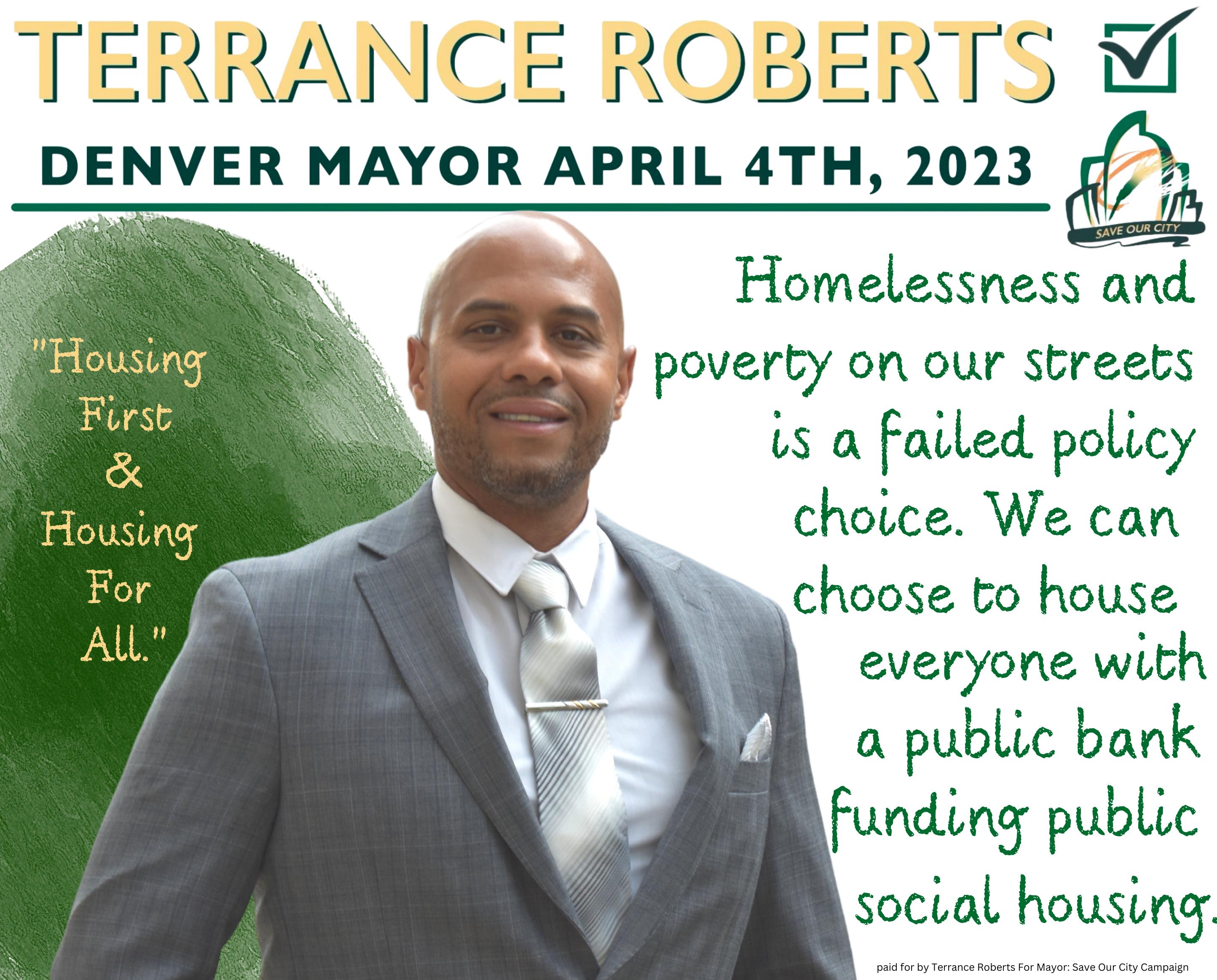
CANDI CANDI
Denver Office of the City Forester Kicks Off Community Survey
By The Denver North Star StaffCandi is a 5th generation Denverite who knows our history, shares our values & has fought tirelessly for our community She's a social worker, celebrated community leader and policy expert She leads daily on housing environmental & economic ustice
EAN THOMA S TAFOYA
for
Ean Thomas Tafoya is a fourth generation Denverite who has spent his life fighting for environmental justice, housing, and Public Health and Safety.
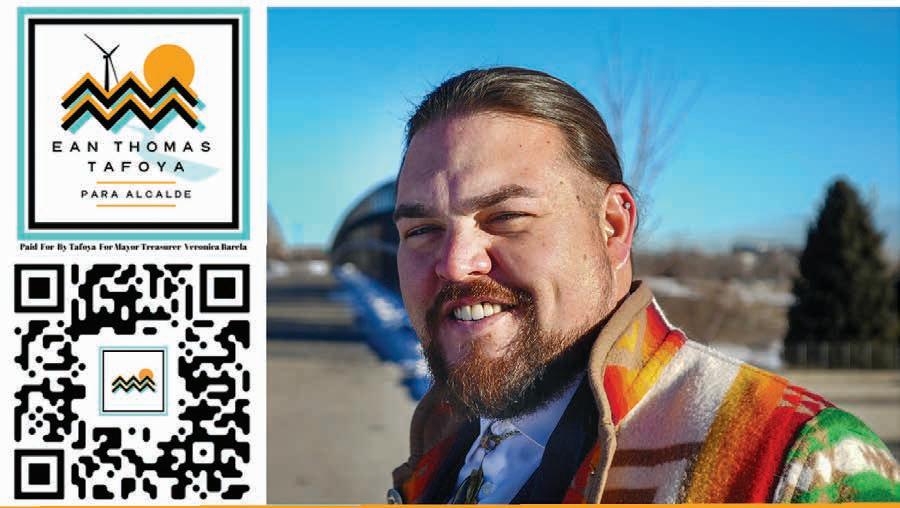

He’s done this:
• As an educator and youth mentor
• In three branches of local government
• Spearheading successful ballot initiatives like Waste No More
• As State Director of Greenlatinos, passing groundbreaking environmental legislation
Vote by April 4 th because #TogetherWeRise
To help create Denver’s first urban forest strategic plan and ensure it reflects an equitable vision for a greener future for our city, Denver residents are being asked to provide feedback about trees through a brief online survey.
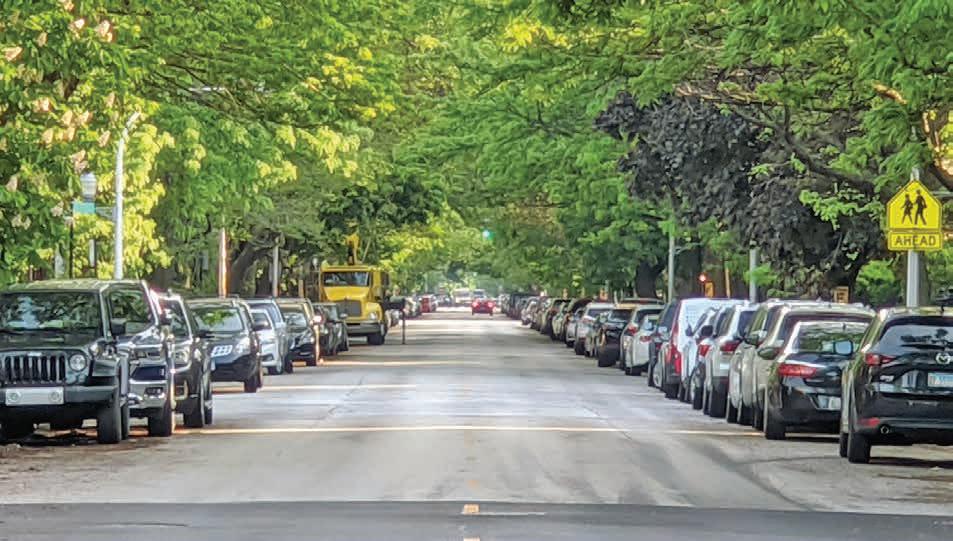

The survey is live at surveymonkey.com/r/ DPRForestry through May 1 and is available in English, Spanish and Vietnamese. The survey should take about five minutes to complete, according to the office.
CANDI'S IMPACT IN JUST FOUR Y
to mention the health of our planet, so we are excited to launch the city’s first strategic plan,” said Happy Haynes, executive director of Denver Parks and Recreation. “Trees can cool cities up to 10 degrees, fight urban heat island effect, prevent heat-related illnesses and are on the frontlines of combating climate change.”
WORKING for the PEOPLE and the PLANET
Denver’s Urban Forest Assessment, completed in August 2022, found that Denver’s urban tree canopy coverage is one of the lowest of all cities nationwide.
As the first elected official from Swansea and the first queer Latina on Denve Candi has transformed local government by making its inner workings access building community power, re-centering the margins, dismantling oppressive fighting against corruption, and challenging our city agencies to innovate So highlights include:
Passed Bill 21-0529: Eviction Defense
Right to Counsel
Passed Bill 22-1614: Wage Theft
Penalties
As an added incentive, Denver residents who complete the survey will have an option to enter to win a free tree from the city to be planted in a public location of their choice.
Divested from private prisons & abusive contractors
“Our urban forest is vital to the health and stability of our city’s environment, not
Bringing 1st community-owned grocery store in 50+ years to food desert
Expanded STAR mental health first
responders
As part of its education campaign to promote survey participation, the Office of the City Forester will conduct a series of open houses this year. Dates and locations will be announced soon and published at denvergov.org/Forestry.
Passed air-quality protections at state level with environmental justice coalition
TOGETHER FOR A THRIVING CITY
Sarah Parady is rooted in community and grounded in values. For more than a decade, Sarah has been a trusted advocate committed to worker’s rights, housing for all, and true public safety

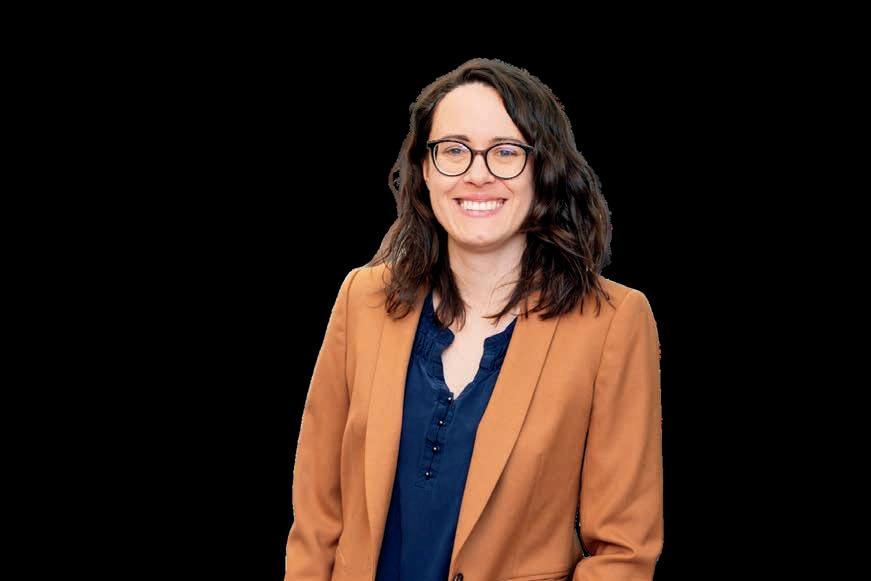
ECONOMIC SECURITY
WORKERS, SMALL BUSINESSES, AND FAMILIES SHOULD ALL BE ABLE TO RELY ON OUR CITY FOR STABILITY AND PREDICTABLE, ACCESSIBLE SUPPORT WHEN WE INVEST IN EACH OTHER, WE ALL WIN.
WE CAN MAKE HOUSING ATTAINABLE FOR EVERYONE WITH PROTECTIONS FOR TENANTS, NEW FUNDING SOURCES TO BUILD CITY-OWNED SOCIAL HOUSING, AND REZONING TO ALLOW AFFORDABLE DUPLEXES, TRIPLEXES, AND ACCESSORY DWELLING UNITS CITYWIDE.
TRANSIT & CLIMATE INTERVENTION
OUR NEIGHBORHOODS SHOULD BE ACCESSIBLE BY INCLUSIVE TRANSIT THAT REDUCES CLIMATE IMPACTS, LIKE SHUTTLES, CONNECTORS, AND A CITYWIDE NETWORK OF SHARED STREETS
Sarah4denver
@Sarah4denver
@Sarahparady
Paid
HOUSING
TRUE PUBLIC SAFETY
WE CAN RE-IMAGINE PUBLIC SAFETY AND BUILD TRUST IN THE GOVERNMENT AS A PROVIDER OF SAFETY CITY RESOURCES SHOULD BE USED FOR HIGHER PRIORITIES THAN CRIMINALIZING POVERTY
As an added incentive, Denver residents who complete the survey will have an option to enter to win a free tree from the city to be planted in a public location of their choice.
Council Approves $7.5 Million for Safe Outdoor Spaces Through 2024
By The Denver North Star StaffThe Denver City Council recently approved a contract amendment with Colorado Village Collaborative (CVC) to continue the city’s support of Safe Outdoor Spaces (SOS) through 2024.
About $7.53 million in additional funding was approved, which includes $7.3 million in American Rescue Plan Act (ARPA) funding to support the operations of at least three temporary managed campsites for persons experiencing homelessness, as well as $225,000 in Participatory Budget program funding for up to three new shower trailers for the SOS sites, according to the city.
SOS sites provide an alternative to traditional
Denver Begins Enforcement of Residential Landlord Licensing
By The Denver North Star Staffcongregate shelter facilities. Guests have their own tents with a cot, sleeping bag and storage bin, with access to bathrooms, food and other services. One of the sites was at Regis University for about a year, from 2021 to 2022.
SOS sites have traditionally helped serve people who were uninterested in congregate shelter by offering more privacy, allowing people to stay together as couples, and guests to shelter with their pets, with supportive services.
Zoning for SOS sites is authorized through Dec. 31. Denver is now proposing to move spaces into the same section of the zoning code that governs temporary tiny home villages, which would ensure that SOS sites continue to get approval.
Residential rental property addresses in Denver without a required license have begun receiving notifications of upcoming citations and fines if they do not apply for a residential rental license within 45 days, the Department of Excise and Licenses recently announced.

The first fine is $150, with a fine of $999 if a third citation is necessary. The city began requiring all multi-unit residential rental properties such as apartment complexes to have a license on Jan. 1.
So far, 2,822 licenses have been issued in Denver for multi-unit rentals. The city has issued 145 notices of violations for properties that are unlawfully operating and will issue additional notices of violations as full enforcement of this new licensing requirement begins.
Early enforcement efforts are primarily targeting unlicensed properties with current
Churches
Continued from Page 14
The Julian Street building is slightly smaller at 7,941 square feet and dates back to 1955, according to city records. Both churches are in the Ghost Historic District, meaning any exterior changes require approval from the City’s Landmark Preservation Commission.
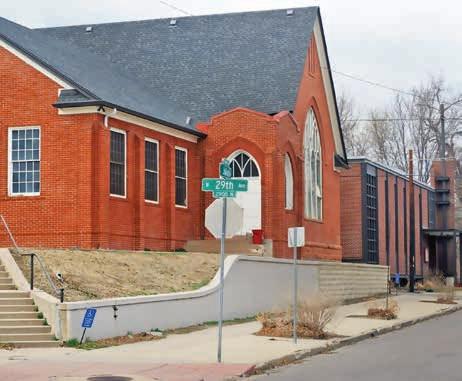
But a representative of Tamburello at the committee meeting said there are no plans for major exterior changes. Tamburello didn’t respond to a request for comment Tuesday on the expected uses of the property.
or previous public health complaints, Excise and Licenses stated.
Denver began accepting residential rental license applications in March 2022, almost 10 months before the licensing requirement began for multi-unit rental properties. Landlords are required to obtain an inspection from a third-party inspector before applying for a license, for which the city provides an online checklist of what inspectors will look for.
Landlords of single-unit rental properties are not required to obtain a license until Jan. 1, 2024. However, 1,005 properties have already obtained a single-unit residential rental license. There is a 50% discount on the application fee for all single-unit landlords who apply before the license is required.
More information can be found on the Excise and Licenses website.
But a covenant ownership reached with the West Highland Neighborhood Association places some restrictions on the property, lim- iting the total space used for food and beverage operations to 12,000 square feet, prohibiting the sale of hard alcohol and outlining allowable hours of operation.
“WHNA supports the Rezoning Application subject to the Covenants, but would not support the Rezoning Application without the executed Covenants,” the neighborhood association wrote in a letter of support.
One West Highland resident wrote a letter opposing the rezoning, saying it would increase traffic and noise complaints and decrease parking and neighborhood safety. Tamburello’s real estate work, done under the name Generator Real Estate, has had something of a focus for years on the Highlands, as well as “old, cool buildings,” he previously told BusinessDen.
Among his past projects is the building used by the restaurant Root Down at 1600 W. 33rd Ave, which Tamburello fashioned from what used to be an auto mechanic’s shop.
No candidate brings this competence to the Auditor’s race
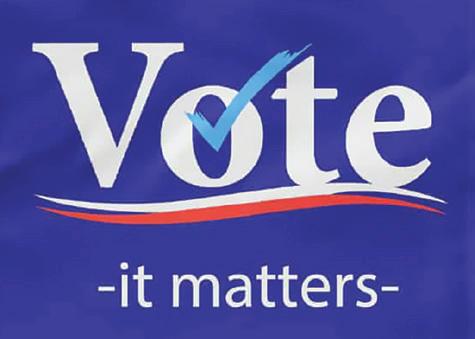
QUALIFIED
• Certified Public Accountant
• Designation of Chartered Financial Analyst

• Designation of Chartered Global Management Accountant
EXPERIENCED
• Over 40 years of auditing and accounting
• Produced over 1,100 audits where my name is a the top of the letterhead and my signature at the end of the report
APRIL 4
• Denver Auditor for 7+ years; Colorado State Auditor for 11+ years

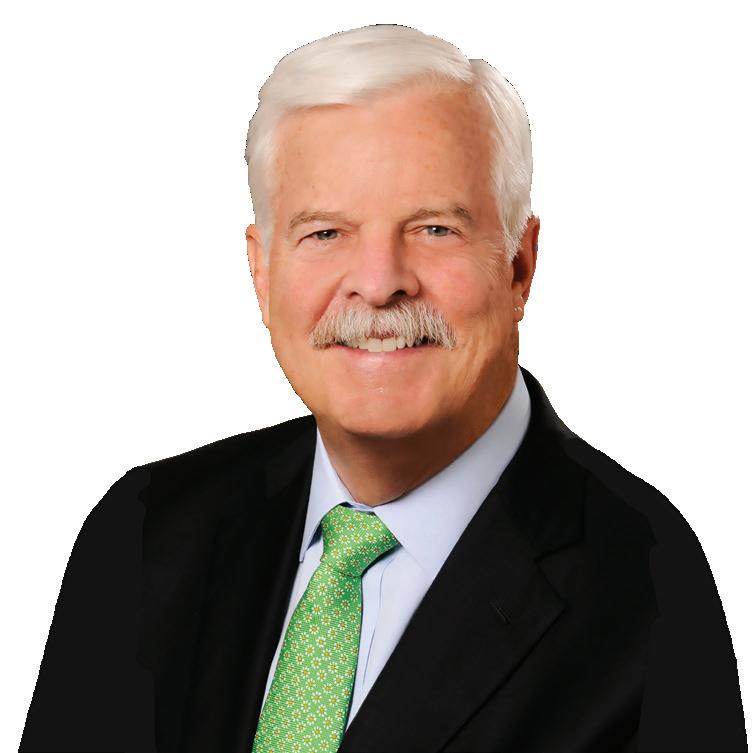
INDEPENDENT
• Free from any conflicts of interest
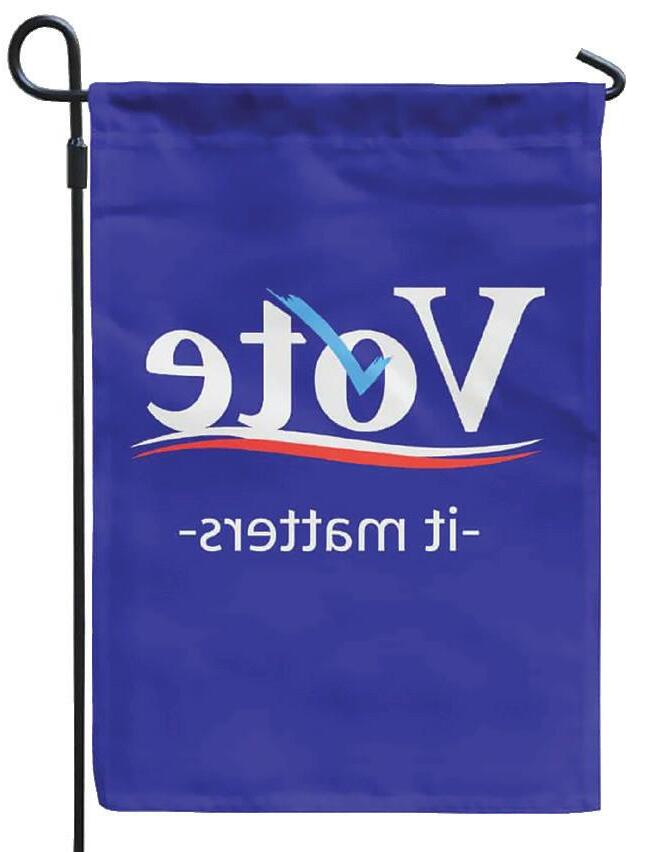
• Has intellectual honesty
• Always maintains an attitude of impartiality
complaints, Excise residential rental 2022, almost requirement properties. Land inspection before apply provides inspectors will rental proper license un properties single-unit residendiscount single-unit the license on the Ex-


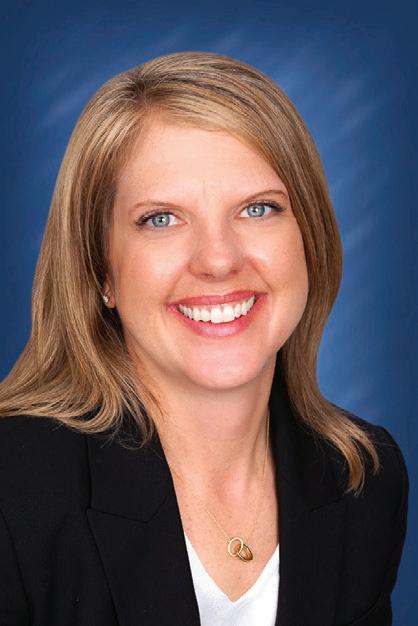
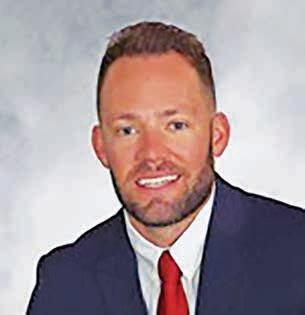
SUPPORT LOCAL JOURNALISM
As a free community newspaper, The Denver North Star is funded through advertising, the occasional grant, and contributions from community members like you.


As a community-minded newspaper, we keep our ad rates the lowest in the city to support our local businesses. Contributions and grants make up 10% of our annual income and every penny goes to support publishing costs.
Your contribution ensures this paper can continue serving NW Denver. Thank you.






Please take this opportunity to renew or become a member.
Please visit DenverNorthStar.com or mail this form along with a check to: Denver North Star P.O. Box 11584 Denver, CO 80211



We appreciate your contribution of any amount. If you contribute $50 or more annually, and would like an additional copy of the paper mailed to you in an envelope each month, or live outside our free distribution area and would like a mailed copy, please check the option below.
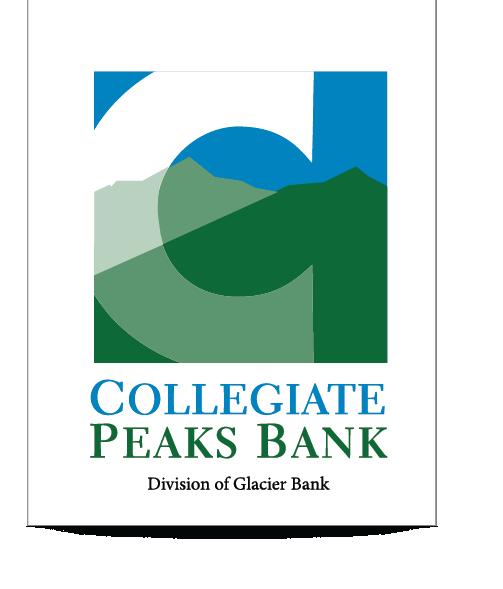


Please mail me a copy of the newspaper each month:

___ Yes ___ No
and beverfeet, prohiboutlining
Applicawould not without the neighborhood assowrote a letit would complaints and neighborhood safety. under the had someHighlands, previously building at 1600 W. fashioned from shop.
Name: Address: Phone: Email:
34,000 HOUSEHOLDS & BUSINESSES
full of people who hang out at all the hippest places where The Denver North Star is delivered.
Don't miss your chance to advertise in next month's edition.
Ads@DenverNorthStar.com

Jefferson Park: Crossroads of the Northside
Jefferson Park is not only one of our oldest North Denver neighborhoods, but one that has been subject to frequent reinvention.
Originating in the 1870s, it included parts of old Denver, Highland’s River Front, Taylors’ Subdivision along with Hager’s, Crane’s and Tynon’s Additions. It had a robust business district, a broad range of housing, good access to transit and was even home to a circus.
Some of its residents were notorious, some were visionary and some were just average men, women and children, living out their lives. Its residents came from all over the world with heavy concentrations of Germans, Swedes, English and Irish. Residents were working class, middle class and upper class.
Its boundaries included Speer Boulevard on the North, West Twentieth Avenue on the South, Boulevard (Federal) on the West and the Platte River on the East. Because of its location, nestled up to the river, it also had its share of industry. It was eventually divided by construction of the Valley Highway, otherwise known as Interstate 25.
When Denver was young, one of the first bridges that allowed hopeful miners to get ready access to the mountains crossed where West 25th Avenue now runs. Because John Good built a brewery in 1859 on the east bank of the river near the bridge, many of the neighborhood’s residents were southern Ger-
mans who were hired because of their experience with making the golden elixir.
Good sold out to Philip Zang and it became Zang’s Brewery. Zang later also became a partner in Lakeside Amusement Park at West 46th Avenue and Sheridan Street. The large Victorian house on the east side of I-25 near the Aquarium was home to Zang’s brewmaster.
In the period between the founding of Denver as part of Arapahoe County and 1902, when Denver split off to become the city and county of Denver, the streets had names like Ruby, Emerald and Diamond. In 1902 all city street names were standardized to match their counterparts on the east side of the Platte. Now, the old names only exist in development names like the Diamond Hill complex at West 26th Avenue and Zuni Street. Emerald Street became West 25th Avenue.
Among the many businesses in Jefferson Park was a bit of an oddity. The Sells-Floto Circus, owned by The Denver Post owners Frederick Bonfils and Harry Tammen, kept its equipment and animals in winter quarters in its log buildings at Decatur Street and West 27th Avenue.
That site is now a high-rise called Decatur Point Apartments. Imagine elephants, tigers and camels marching around where the Career Education Center Early College now stands. Stay tuned in the future for more on this circus.
The Anderson House was home to William W. Anderson and stood at 2329 Eliot St.
Anderson was an attorney who once defended Alferd Packer, the notorious cannibal of the Colorado mountains. Anderson got into an extended argument with Tammen and Bonfils and tried to kill them. He shot Tammen three times and Bonfils twice but both men survived. Anderson was acquitted after three trials.
The Adams Mystery Playhouse was first the home of construction magnate William Simpson. Then it was a funeral home, then the playhouse which was the brainchild of Walter Keller, who restored the Lumber Baron house on 37th Avenue and Bryant Street in Highland.
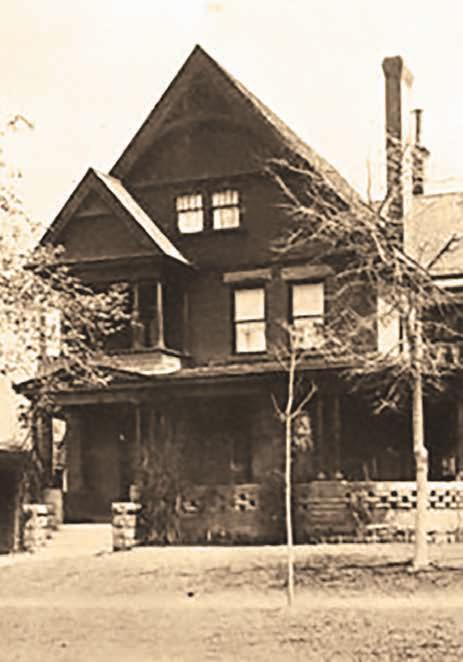
As the new century dawned there was much change near Jefferson Park. Elitch’s Amusement Park moved down into the river bottom. The sports venue the Pepsi Center opened along Speer Boulevard. And the new Mile High Stadium south of Jefferson Park quickly consumed a section of the southern neighborhood to accommodate peoples’ parking needs. That led to pressure to provide more close-in housing to sports fans.
The first major neighborhood plan that set goals for the future was developed in 1976. Between then and the second plan in 2005, the city developed Blueprint Denver in 2002. Density became the watchword of that plan with single-family lots slated to become multi-family housing ranging from slot homes to three- to five-story apartment buildings. The 2005 neighborhood plan laid out ways to mediate change.
In 2021, Denver initiated consultation
with the four neighborhoods of the near Northwest side to plan for improved quality of life through 2040. Members from Jefferson Park, Highland, Sunnyside and Chaffee Park have been meeting to develop the plan.
Dr. Rebecca A. Hunt has been a Denver resident since 1985. She worked in museums and then taught Colorado, Denver and immigration history at the University of Colorado Denver until she retired in 2020.

Shared Streets Program to Return, But Not For a Few More Years
Denver’s popular Shared Streets program is making a comeback.
Sort of.
Just not anytime soon.
During the early days of COVID in April 2020, Denver’s Department of Transportation and Infrastructure (DOTI) came up with a temporary program called “Shared Streets” to allow people to spread out more and use a limited number of city streets for walking, biking and rolling in wheelchairs.
On 11 streets throughout the city, DOTI installed temporary barricades to calm traffic and slow down drivers to make the streets more friendly to all users.
In North Denver, those included West Byron Place between Sheridan and Vrain Street, Vrain Street between West Byron Place and West 26th Avenue, and Stuart Street between West 24th Avenue and Lakeshore Drive.
All of the streets surrounded Sloan’s Lake Park and complemented the two full-street closures inside the park on Lakeshore Drive and West Byron Place that still exist today.
Those small measures had a big impact on opening up the streets for all users. According to DOTI, in 2021 vehicle trips were reduced by 77%. Driver speeds on those streets were reduced by 28%, and walk-and-roll use on those streets was up by 287%.
“Folks felt comfortable walking and biking,
and yoga-ing, and all those things on these shared streets,” said Jay Decker, innovation and transportation manager at DOTI, at a recent public meeting.
In August 2021, those temporary Shared Streets programs came to an end. The barricades were removed, and residents were told to go back to walking on the sidewalks. But the program was popular, as one petition from residents got around 1,500 signatures asking for DOTI to make the program permanent.
In July 2022, DOTI started a planning process to bring Shared Streets back. Eight months into the planning process, DOTI recently held a second public meeting about restoring Shared Streets.
In the meeting, Decker noted that DOTI surveyed and received feedback from 2,000 Denver residents asking them about Shared Streets. About 50% of respondents lived on or adjacent to the Shared Streets thoroughfares, and 90% of respondents liked the temporary program.
Of those surveyed, 85% responded that they wanted a more permanent program. Many residents at the virtual meeting questioned why it was taking DOTI so long to bring back Shared Streets when it took only a few months to plan the original version, which was very successful.
Decker noted that DOTI wants to be very thoughtful in building out a long-term Shared Streets program that can last decades and be
informed by community input.
The new Shared Streets will be broken down into two categories, Community Shared Streets, in residential neighborhoods, and Commercial Shared Streets, in business districts. Both variations will be anywhere from one to three blocks in length, and will only be allowed on local, neighborhood or collector streets.
Streets with RTD bus lines will not be eligible for Shared Streets so they don’t cause any transit delays. Since resources are limited, DOTI will be giving priority to streets with certain criteria, like being in a neighborhood that is high on the city’s Equity Index, streets that connect to places like parks, and streets that already are occasionally closed for events.
DOTI put out a survey that allowed Denver residents to make suggestions on where they would like to see Shared Streets return. In North Denver, some of the popular suggestions were the streets around Sloan's Lake (where the original shared streets were), lots of the neighborhood streets in the Lower Highlands area, Platte Street, 25th Avenue in Jefferson Park, and streets around some of the smaller parks like Pferdesteller and Chaffee parks.
There were also lots of suggestions for Shared Streets near schools like Edison Elementary, Brown Elementary, North High School, Valdez Elementary and Sandoval Elementary, with comments to make the streets around schools safer for kids walking and
biking to school.
Through the public meeting, Decker said it wouldn’t be likely they would have a Shared Street program next to a school, as they wanted to preserve convenient curbside school drop off for parents who drive their kids, since many families in Denver exercise school choice and drive their kids to schools.
The streets that had lots of both positive and negative comments around changing them to Shared Streets included business districts like Tennyson Street in Berkeley, Lowell Boulevard in Regis and Raleigh Street in the West Colfax/ Sloan’s Lake area.
Of note, there was very little input from North Denver neighborhoods that score higher on Denver’s Equity Index, like Chaffee Park.
The earliest that residents could expect to see these Shared Streets in a best case scenario is about two years from now.
In the virtual meeting Decker cited that they need to follow the city’s process to request budget dollars to design the streets this spring, which would be allocated in the 2024 budget, and that once designed they would need to request budget to construct the streets in the 2025 budget. That all assumes that Shared Streets are prioritized by the mayor and council.
Allen Cowgill is the City Council District 1 Appointee for the Denver DOTI Advisory Board.

RTD Looks to Make Some Fares Cheaper
By Jill CarstensBeginning in early 2024, bus and light rail riders will receive rate reductions based on RTD’s most extensive ridership study in its history.
“This is a monumental effort over the past two years,” RTD General Manager and CEO Debra A. Johnson said during the board’s February Finance and Planning Committee meeting.
Johnson said the goals were to make ridership more affordable and to simplify the fare
structure, with equity as the priority.
The study, consisting of three rounds of outreach, found most of the responses noted high and complicated fares. RTD conducted focus groups with an emphasis on engaging diverse and underrepresented populations through their partnerships.
Surveys were conducted on site and in person at bus and rail stops, door to door, through focus groups and online in English and Spanish. Johnson added that an
additional 21 safe harbor languages were accommodated through translators to get thorough feedback.
Sunnyside resident Bradley Abeyta uses the A and E light rail lines regularly to get to work as well as the 38 bus line to attend sporting events. His main concerns about the fare complexity mirrored the survey.
“It isn’t clear where you can go on the regional pass,” he said.
His impression was that current RTD fares are more expensive than in other comparable cities and was hoping for an overall reduction.
RTD Civil Rights Director Carl Green Jr. explained how the surveys influenced the resulting offering.
“We consolidated all of the feedback to reflect community needs,” he said.
See RTD, Page 19
Tai Chi Will Put a Spring In Your Step
Book Review: Aye, ‘Captain’: Book Details
ERIKA TAYLORn ancient practice, Tai Chi may seem foreign and even intimidating. When you think of it you probably picture groups of people moving meditatively together almost as if swimming against the backdrop of a serene park in China. That is where most of the Tai Chi in the world takes place.
And that means a lot of Americans are missing out on the plethora of benefits that Tai Chi has to offer. Luckily, it's not unheard of to find groups like this closer to home.
Stefan Adkins, from LA Shaolin Studios, leads a group of Tai Chi practitioners six mornings a week at a park in Mission Hills, California, in addition to a full menu of in-studio and online classes. Adkins is a fourth-degree black belt in Shaolin Kung Fu and has been practicing Tai Chi since 1997. I asked him some questions to help shed some light on how Tai Chi can help us reach our fitness goals and reap other benefits too.
WHAT IS TAI CHI?
Tai Chi Chuan translates to “Grand Ultimate Fist.” Not “ultimate” only that it is the most martial, the best or top most powerful art, but also that it is all-encompassing. Tai Chi reflects the balance and inner workings of every atom inside each of us and extending to the whole of the universe. Tai Chi teaches us that true balance comes from constant motion. Even as we are standing still we are constantly reacting to forces both inside and outside ourselves. Noticing our breath is the first component of Tai Chi. The slow, gentle movements of the art are designed to support this. But don’t be fooled. You can get a great workout, both aerobic and resistance, during a Tai Chi practice.
WHO SHOULD TRY TAI CHI?
Tai Chi practice is often suggested for older adults. It has a well-deserved reputation for improving balance and preventing falls.
RTD
Continued from Page 18
Single rides to the airport would still be $10, but the monthly pass would include those rides.
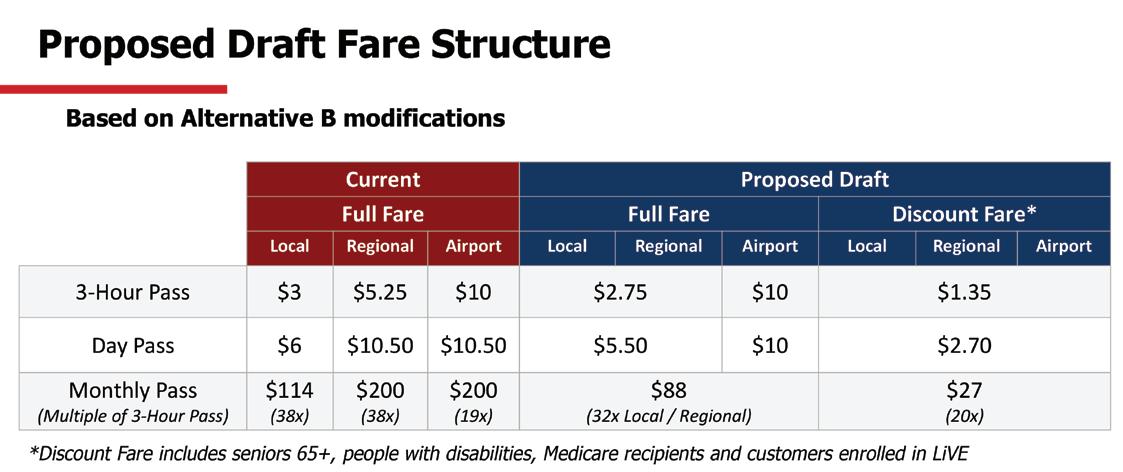
Public comments taken at the meeting showed overall enthusiasm for the efforts.
Molly McKinley, policy director for Denver Streets Partnership, shared her excitement for the fare reductions but encouraged future partnerships with the state for funding to help lower rates further.
She mentioned how state funds last August contributed to the success of the free ride campaign, in which ridership increased gradually, but significantly, afterward.
RTD reported it had about 5.2 million boardings in July, but it saw about 6.3 million in August when the rides were free, and slowed down to about 5.7 million in September when fares resumed.
Jaime Lewis, transit advisor for the Colorado Cross Disability Coalition, applauded the notable discounts for disabled populations, 65-and-older riders, and Medicare and LIVE participants, as well as the substantial discount of the monthly pass. He encouraged the board to market these changes to garner new riders.
Michael Guzman, RTD board director for District C, said the study and resulting fare structure proposal is a great accomplishment.
“We are taking a bit of a financial hit by reducing the fares hoping to offset costs with the projected increase in ridership,” he said. “Ad-
ABut the benefits go far beyond this and are appropriate for everyone. The focus necessary to maintain a lifelong Tai Chi practice is achieved through the practice itself, not from some sense of “being able to do it” or “being good at it.” Because Tai Chi teaches mindful movement it can be effective and enjoyable for many people, even those who don’t like more traditional Western forms of exercise. Many times the people to whom Tai Chi sounds the most difficult or boring or inaccessible are the very people who would most benefit from it.
HOW QUICKLY WILL I SEE THE BENEFITS OF TAI CHI?
You will learn things during your very first Tai Chi class that you can use in your daily life to enhance your health, manage stress and improve your ability to navigate life. There are immediate benefits. Qigong, translated as "breath work" or "energy work," consists of gentle breathing sometimes combined with simple, repeated movement. The idea is to help relax the mind and mobilize the body's energy.
Qigong may be practiced standing, sitting or lying down. It is simple to follow and easy to learn to do on your own. Many classes will start there and progress to short and/or longform routines consisting mainly of stepping and arm movements matched with breath. One of the wonderful things about Tai Chi is that the practice is designed to last a lifetime. It is said, “10 years in Tai Chi is a good start.” After 26 years of practice, I do feel like I'm just getting going! That continued learning is one of the most important benefits of the practice. That ability to continue to learn — to be curious, to test ourselves, improve and level up is key to aging and living well.
I GET STARTED?
HOW CAN
As with any form of exercise, you need to find a setting that works for you. If a live class is appealing to you, look for groups who practice together at a community build-
ing, church, school or park. Or, a dedicated Kung Fu or Tai Chi center. These days there are even quality online classes including one by LA Shaolin Studios that meets four times a week. Even five minutes a day of regular Tai Chi will benefit you. You can start with a simple introduction to Qigong at ilakungfu.com/Videos/.
I so appreciate the time Adkins took with me to help me introduce this art, almost as much as I appreciate him encouraging my husband and I to start practicing Tai Chi while I was pregnant with my first child. I am certain Tai Chi is a large part of why I so enjoyed being pregnant, had such a smooth delivery and that both of us weathered those first few months of parenthood as well as we did. Nothing like a workout and meditation you can wear your baby to.
Wonder if Tai Chi is for you? If pain relief, cardiovascular health, mood boosting, balance improvement, fall prevention, immunity bolstering, heightened cognition, protection against bone fracture, fatigue reduction or improved sleep are on your fitness wish list for this spring, the answer to that question is a resounding yes!
Erika Taylor is a community wellness instigator at Taylored Fitness, the original online wellness mentoring system. Taylored Fitness believes that everyone can discover small changes in order to make themselves and their communities more vibrant, and that it is only possible to do our best work in the world if we make a daily commitment to our health. Visit facebook.com/erika.taylor.303 or email erika@ tayloredfitness.com.
Erika Taylor is a community wellness instigator at Taylored Fitness, the original online wellness mentoring system. Taylored Fitness believes that everyone can discover small changes in order to make themselves and their communities more vibrant, and that it is only possible to do our best work in the world if we make a daily commitment to our health. Visit facebook.com/erika.taylor.303 or email erika@ tayloredfitness.com.
Life of Pioneering Female Sailor
Molly McKinley, policy director for Denver Streets Partnership, shared her excitement for the fare reductions but encouraged future partnerships with the state for funding to help lower rates further.
ditionally, more people on the bus could mean less people on the highways and the strain that causes on Denver’s infrastructure.”
RTD will continue to offer the Eco Pass, he added, hoping to increase its use and efficiency, supporting the state’s goal of reaching reduced emissions by 2030.
During the meeting several area directors voiced their input on the proposal.
Erik Davidson, District I director, applauded an effort to offer zero fares to youth, proposing that RTD continue to seek to di-
versify its funding with unique stakeholder partners to maintain that option.
Bob Broom, District F director, emphasized that future research should aim toward gathering data to measure comparison savings with driving a car paired with the benefit of decreased emissions from increased ridership.
Next steps will include finalizing the proposal in April and putting it out for public comment in May. Guzman added that RTD will check its equity analysis with guidance from the Federal Transit Commission. After implementation of the new fare structure, ongoing assessments will happen to gauge the efficiency of most-used and lesser-used routes. The board will give its final recommendation in July. The rate changes would go into effect early 2024.
Guzman emphasized the continued importance of community feedback during this time. Residents may offer feedback on RTD’s website at rtd-denver.com/farestudy and view the entire report at farefeedback. rtd-denver.com.
March is Women’s History Month at Denver Public Library, and to celebrate we are checking out “Woman, Captain, Rebel: The Extraordinary True Story of a Daring Icelandic Sea Captain” by Margaret Willson.
WENDY THOMASThis narrative nonfiction book follows the life and adventures of Captain Thurídur, a woman remarkable not only for her seafaring skills but her sense of justice and advocacy for those in marginalized circumstances.
In 1783, Thurídur was 7 years old when volcanic activity dried up the rivers and spewed ash over the whole of Iceland, condemning the people to poverty and starvation. Her father refused to help a starving teenage boy who died shortly after leaving their doorstep, weaving through their lives the belief that the boy’s ghost was a curse that would follow them for nine generations.
Growing up in a fishing village, Thurídur wanted nothing more than to take to the sea with her father. At 11, she joined him on his crew, and by the time she was a teenager she was well known for her navigational skills and abundant catches. The rowboats of the time offered little protection from storms, and she also became known for predicting the weather and was a prized crewmate and captain because she navigated dangerous storms without ever once losing a member of her crew. On the sea, she was lucky. On land, the curse of the ghost followed her.
Unlucky in personal and familial relationships, she often found herself up against powerful men who took advantage of her sharp mind, deft skills and inferior status as a woman. Seafaring women were not uncommon at the time, but Thurídur distinguished herself by wearing trousers not only at sea but all the time, along with a tailcoat and short top hat. Her unconventional ways did not go unnoticed, and her individuality often made her the target of idle gossip and ill will.
Further distinguishing her was her commitment to justice and belief in the rights of all, especially those in the direst of situations. She learned to use the legal system to enforce those rights and was known to take care of those who could not take care of themselves.
Thurídur’s acute skills of observation and analysis also led her to solve a crime that the authorities were too lazy and inept to solve themselves. Rather than appreciating her service, the locals took to ostracizing her for exposing the truth, which ultimately drove her from town in fear of her life. At a time when women had little agency, Captain Thurídur determined her own course and fought for her beliefs.
Exhaustively researched and rich with period detail, the book is a wealth of information as well as a fascinating story. With a cast of characters whose lives are intertwined in multiple ways, the List of Key Characters at the beginning is indispensable and extensive backmatter establishes the quality of the research.
Captain Thurídur was a remarkable woman whose story was not widely known before now and may have never been told outside of Iceland had the author not fortuitously stumbled upon her story. A great winter read, check out “Woman, Captain, Rebel” at a Denver Public Library near you.
Wendy Thomas is a librarian at the Smiley Branch Library. When not reading or recommending books, you can find her hiking with her dogs.









































